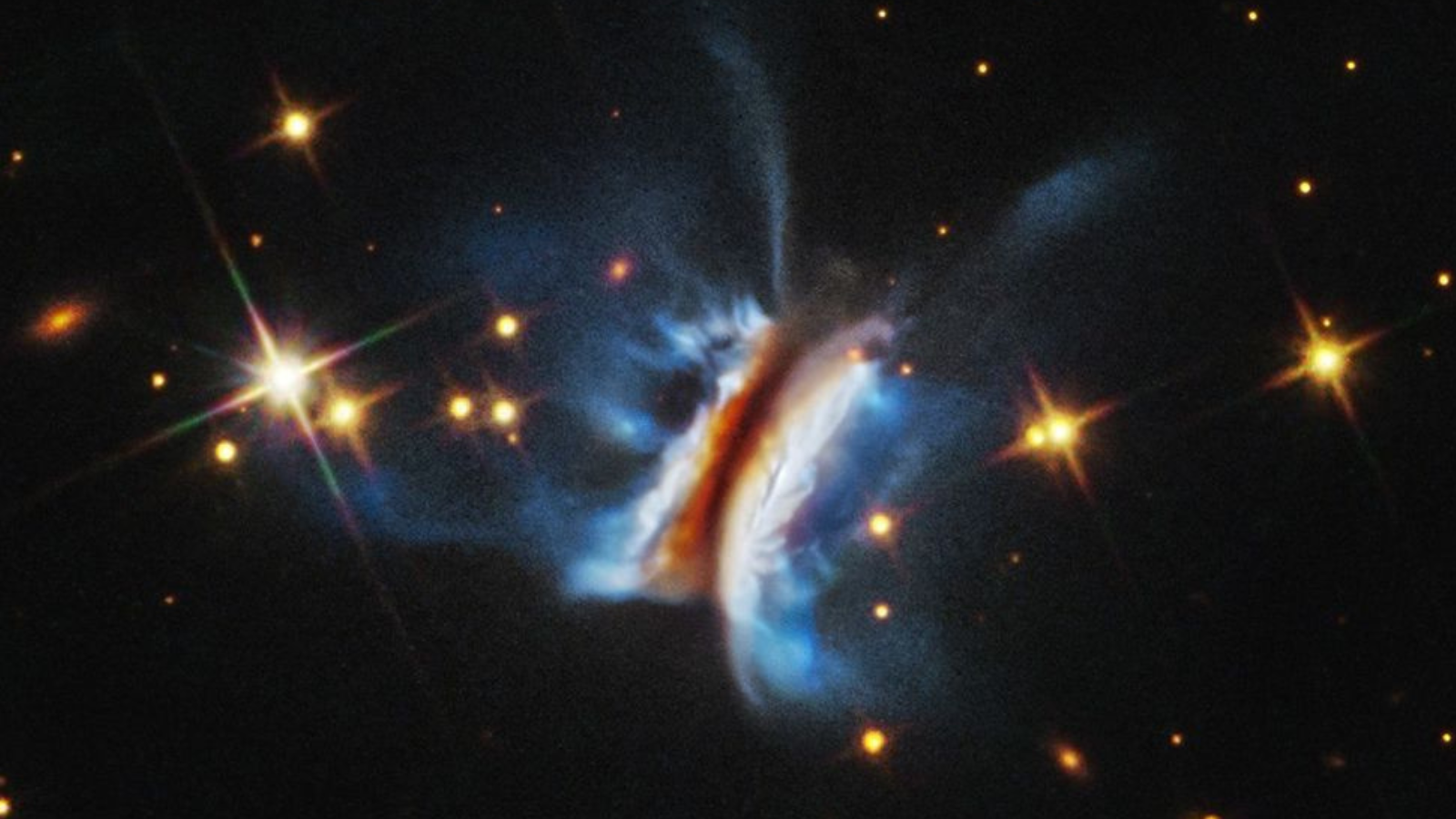Best lenses for astrophotography 2025
We have rounded up the best lenses for astrophotography so you can capture detailed night sky objects this winter.

The right lens is paramount for successful astrophotography, dictating how much light you can gather and getting the right field of view for your chosen target. This guide dives into the best lenses you can get for your camera to level up your astrophotography performance. We have selected lenses with fast apertures and exceptional optical performance to ensure that you can get the best astro shots possible. For more astrophotography gear, we have the best star trackers and the best light pollution filters to level up your craft.
If you are wondering what you can capture in the night sky with your new lens or camera, check out our night sky guide for an in-depth rundown of this month in skywatching.
The quick list
Below, we've summarized the most important information about our picks of the best lenses for astrophotography, including their main characteristics and who they might be best for. If you want to know more about a product before you make a purchase, click 'Read more below' and you'll find more in-depth specs and reviews for each lens.
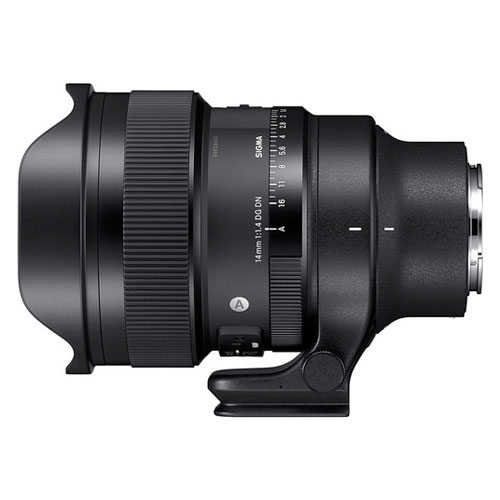
The best lens for astrophotography overall
The Sigma 14mm f/1.4 DG DN Art lens is great for astrophotography thanks to its speedy autofocusing, but it can handle hybrid shooting as well.
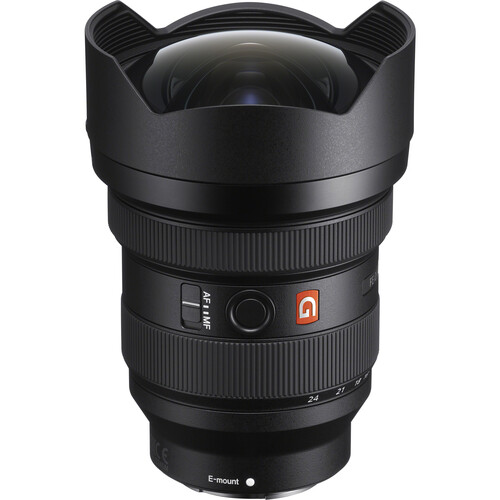
Best Sony lens
If you're looking to get the very best quality from your astrophotography images and can afford to splash out, this Sony lens is a winner.
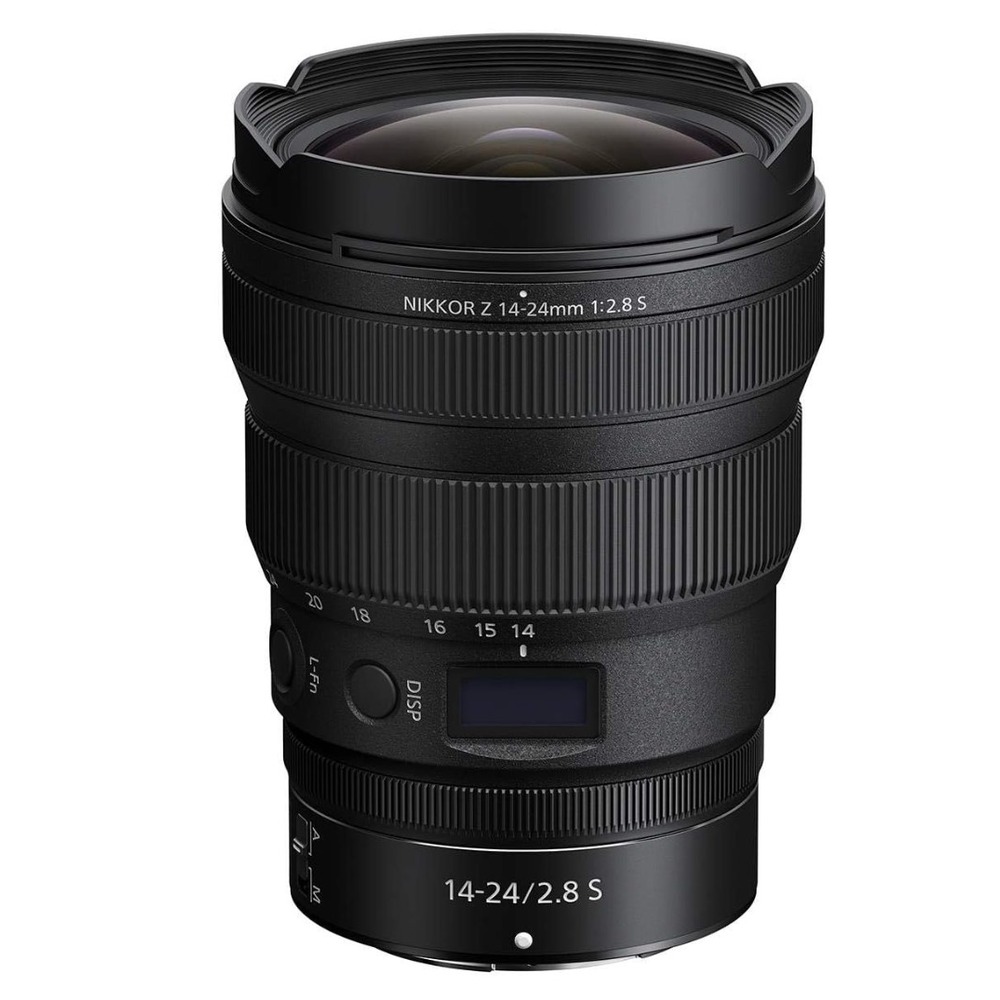
Best Nikon Z-mount lens
The Nikkor Z 14-24mm f/2.8 S is a lightweight and compact lens that provides exceptional image quality, with little distortion and vignetting.
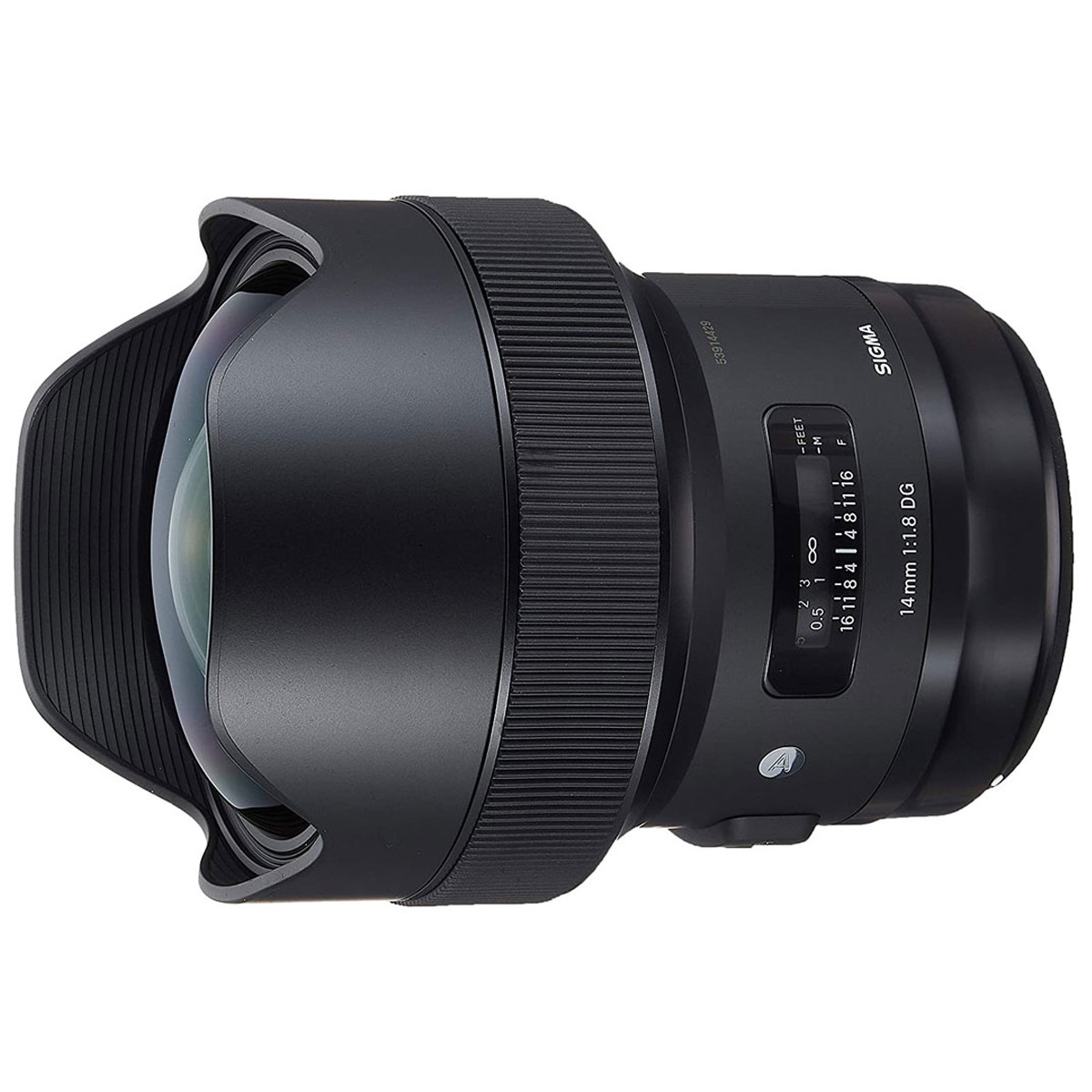
The best widely compatible prime lens
The Sigma 14mm f/1.8 DG HSM ART guarantees super image quality and technically excellent results throughout its aperture range.

Best Canon RF lens
The RF 15-35mm f/2.8L IS USM is Canon’s best ultra-wide zoom lens. It's quite pricey, but it makes it a sound investment for photographers.
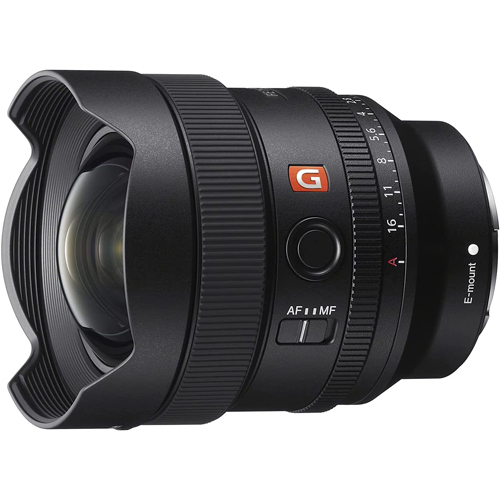
Best Sony prime lens
This lens is ideal for seasoned astrophotographers or photographers who need a wide field of view combined with sharp optics and a fast f/1.8 maximum aperture.
Load the next 6 products ↴
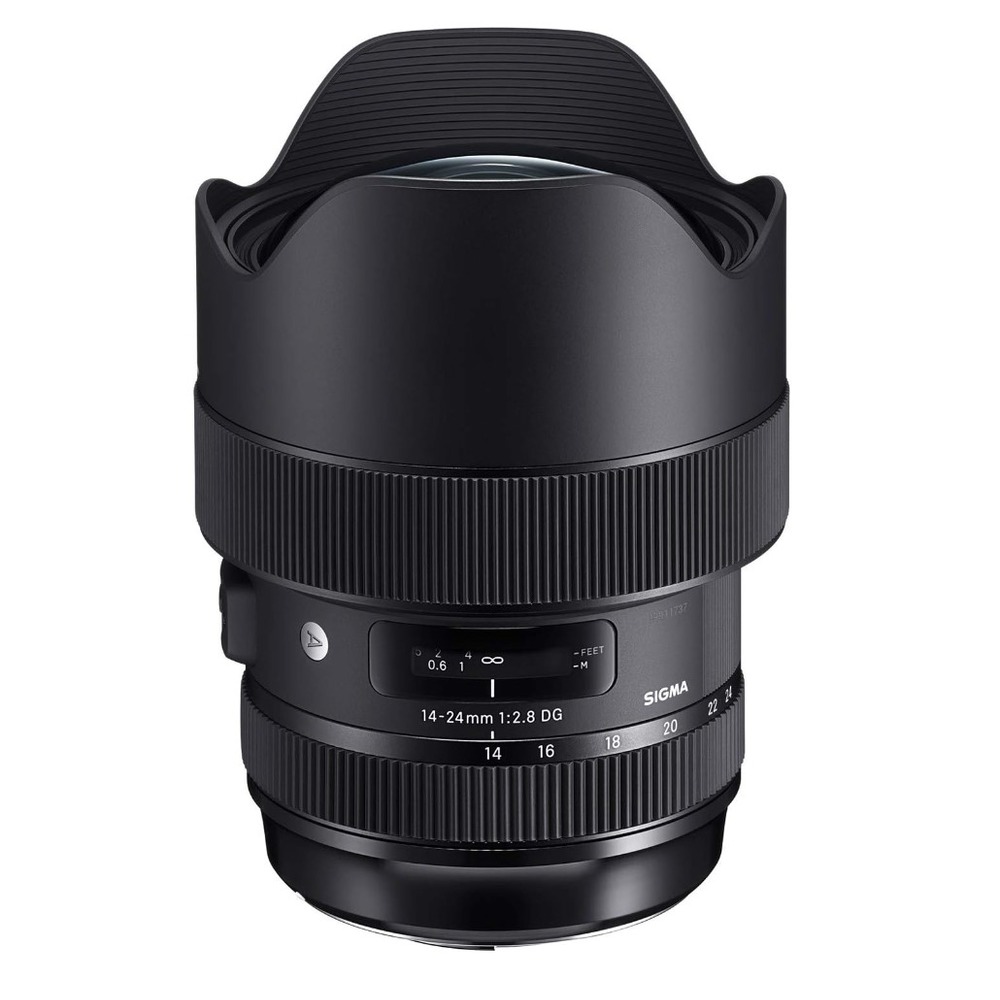
Best for versatility
The Sigma 14-24mm F2.8 DG HSM ART easily holds its own against other high-end, wide-angle, big-aperture lenses and does so for an impressively low price.

Best Canon EF lens
For more experienced photographers, this lens is certainly worth considering if wide-field photography is one of your prime areas of interest. That said, it comes with a high price tag.
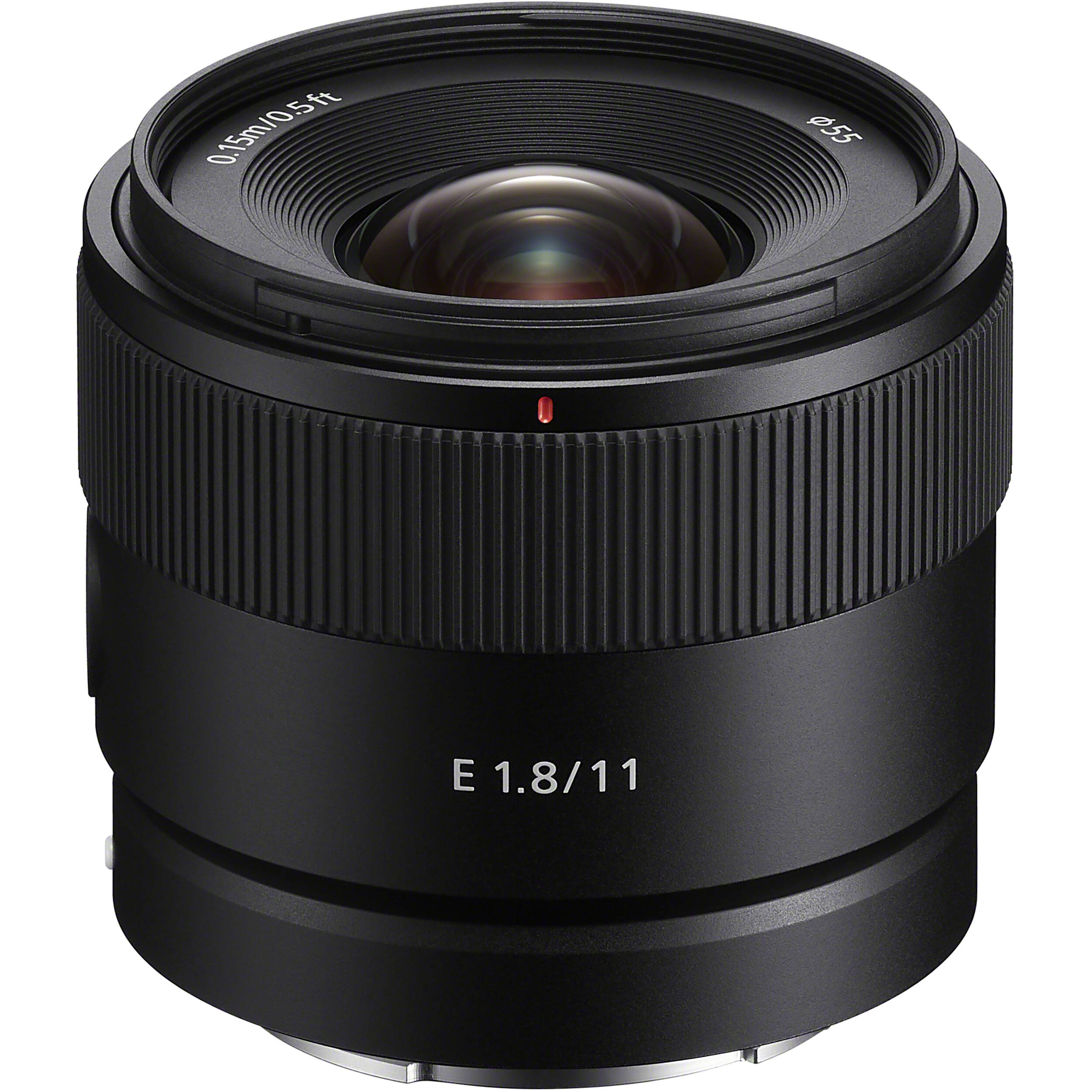
Best APS-C Sony lens
This lens is what APS-C Sony users have been waiting for. It's lightweight, compact and produces fantastic results. It's great for astrophotography thanks to its ultra-wide focal length and fast f/1.8 aperture.
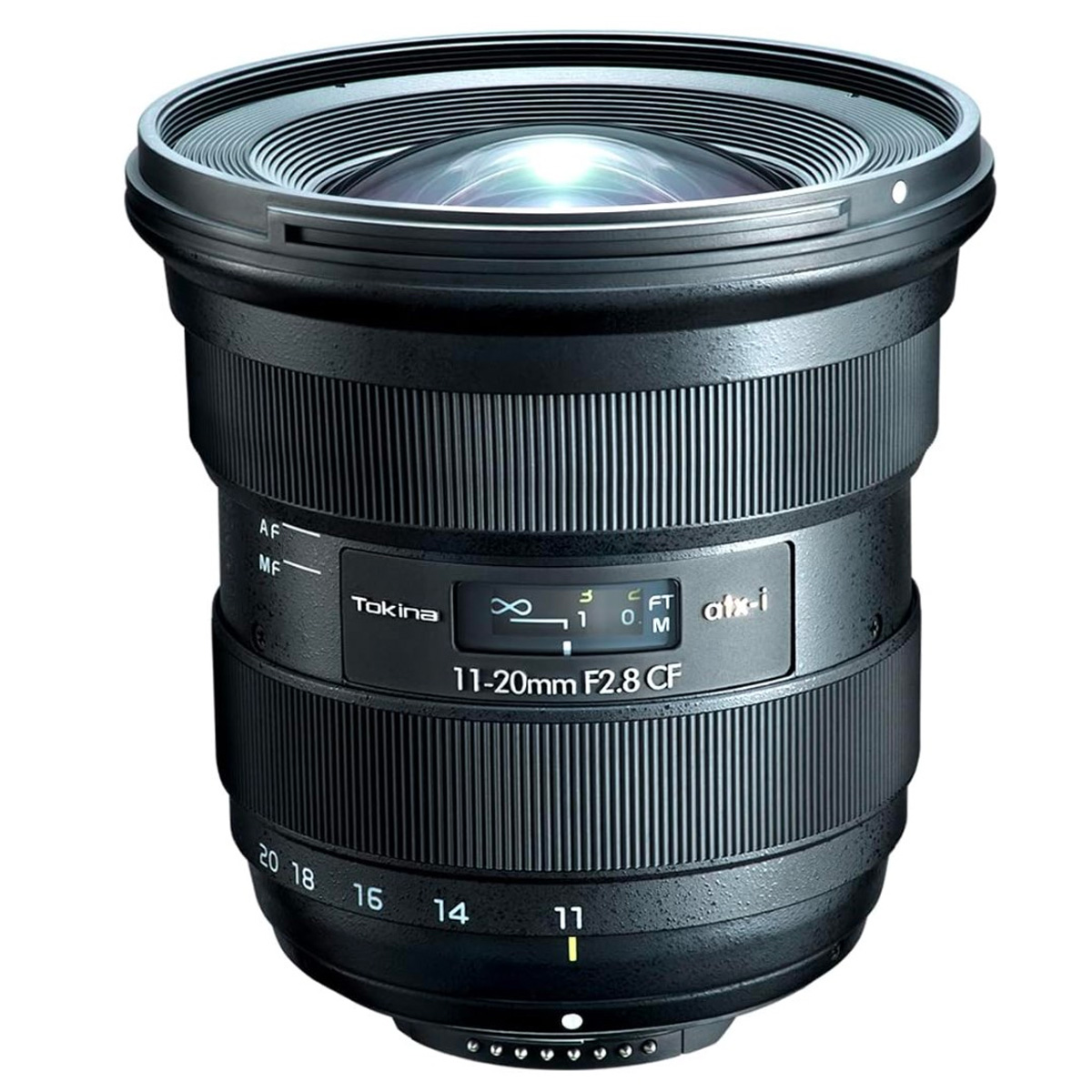
Best APS-C DSLR lens
For anyone seeking a fast, ultra-wide zoom lens for APS-C cameras, the Tokina atx-i 11-20mm f/2.8 CF is our top recommendation. It’s sleek, slim, lightweight, and brilliantly sharp.
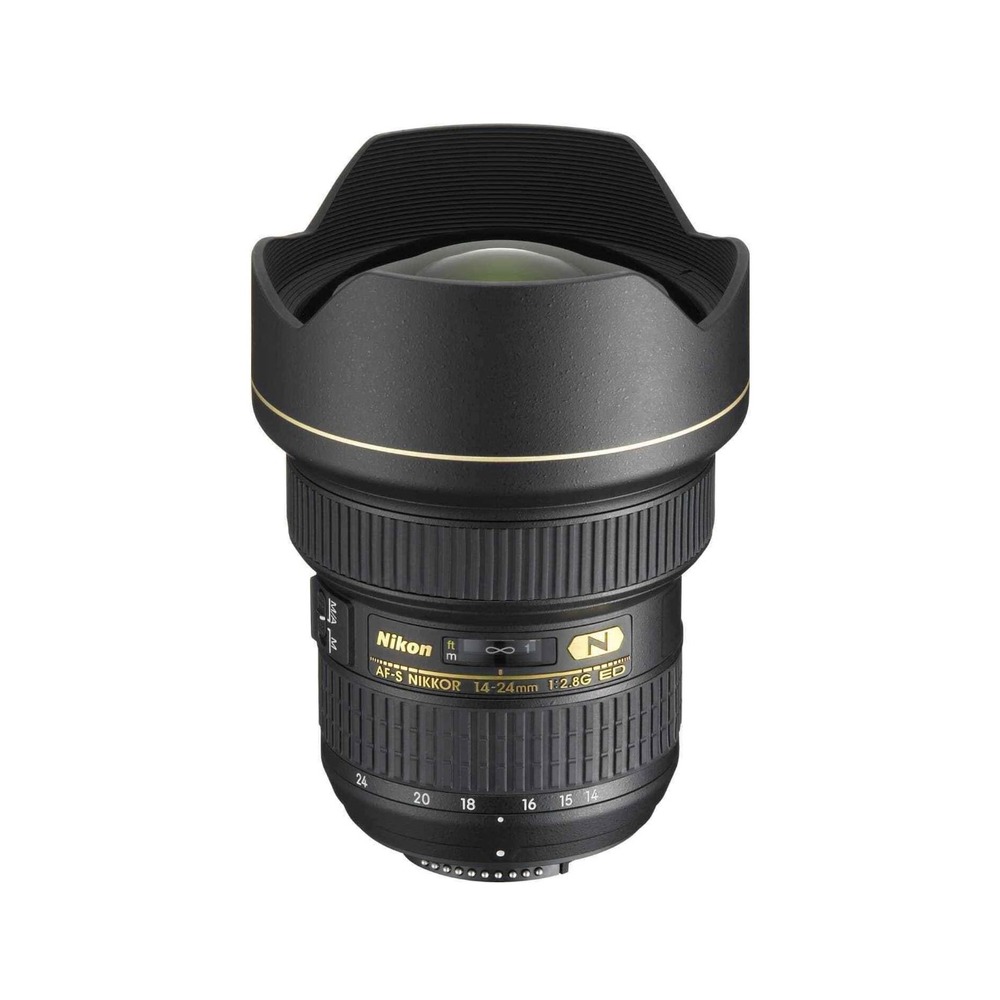
Best Nikon DSLR lens
The Nikon AF-S 14-24mm f/2.8 ED is still a go-to for many professionals and amateurs alike. It provides clean, sharp, straight lines for landscape or interior photography, but also works well in low light.

Best budget lens
If you’re looking for an inexpensive ultrawide lens for astrophotography or landscape/architecture shots, there's very little on the market to touch the Rokinon/Samyang 14mm f/2.8 lens.
Best lenses for astrophotography we recommend in 2025
Why you can trust Space.com
The best lens for astrophotography overall
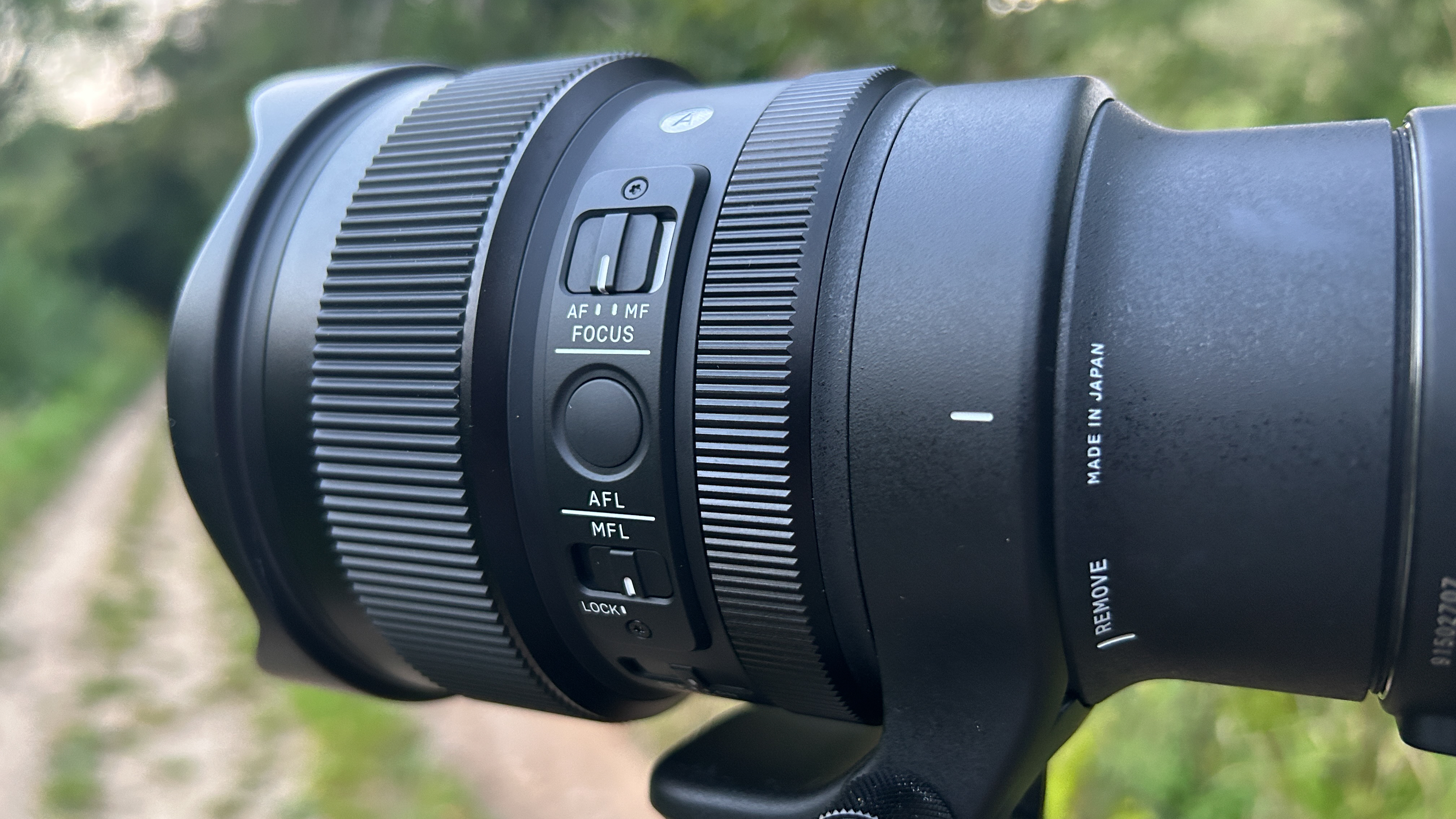
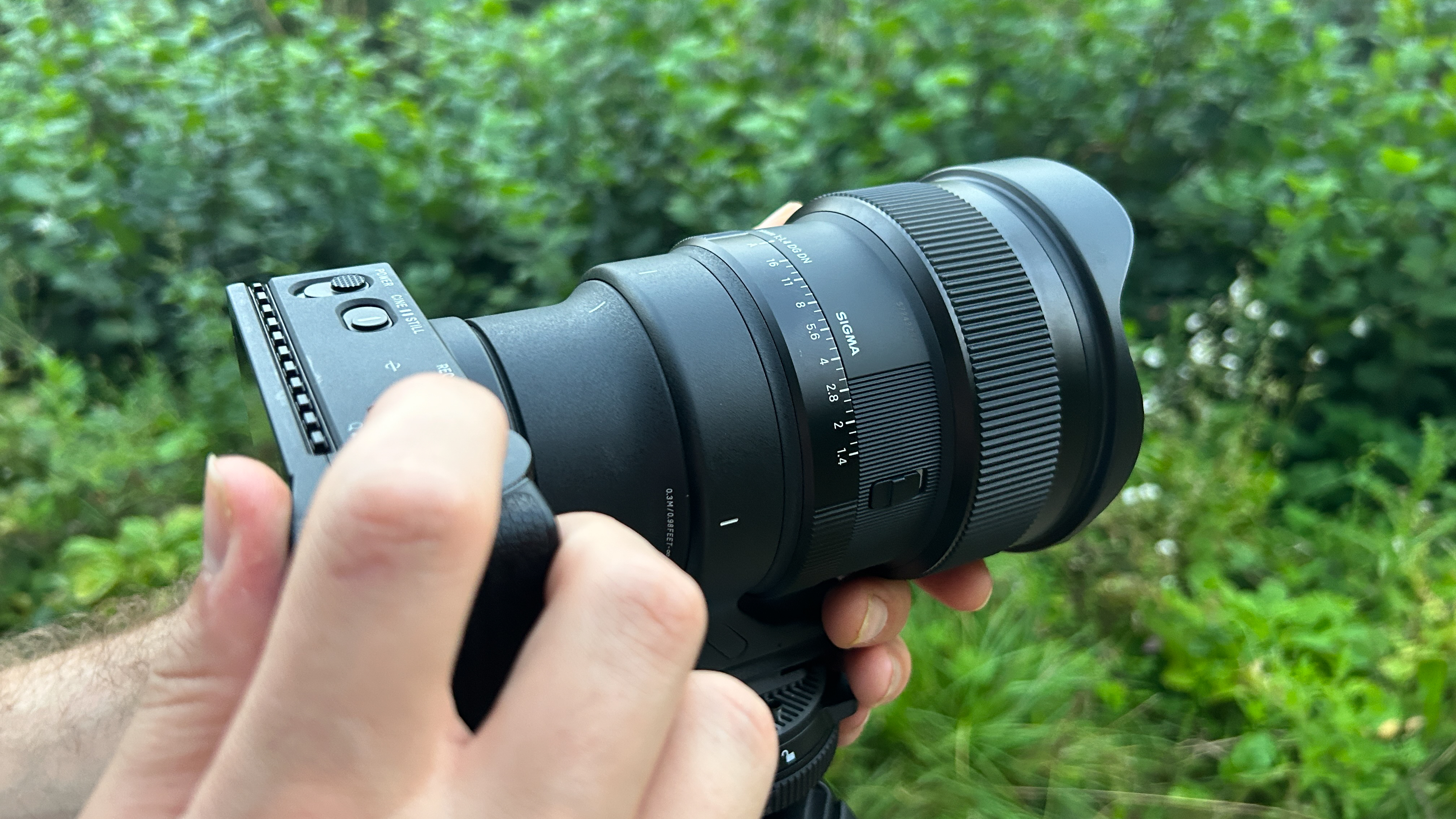

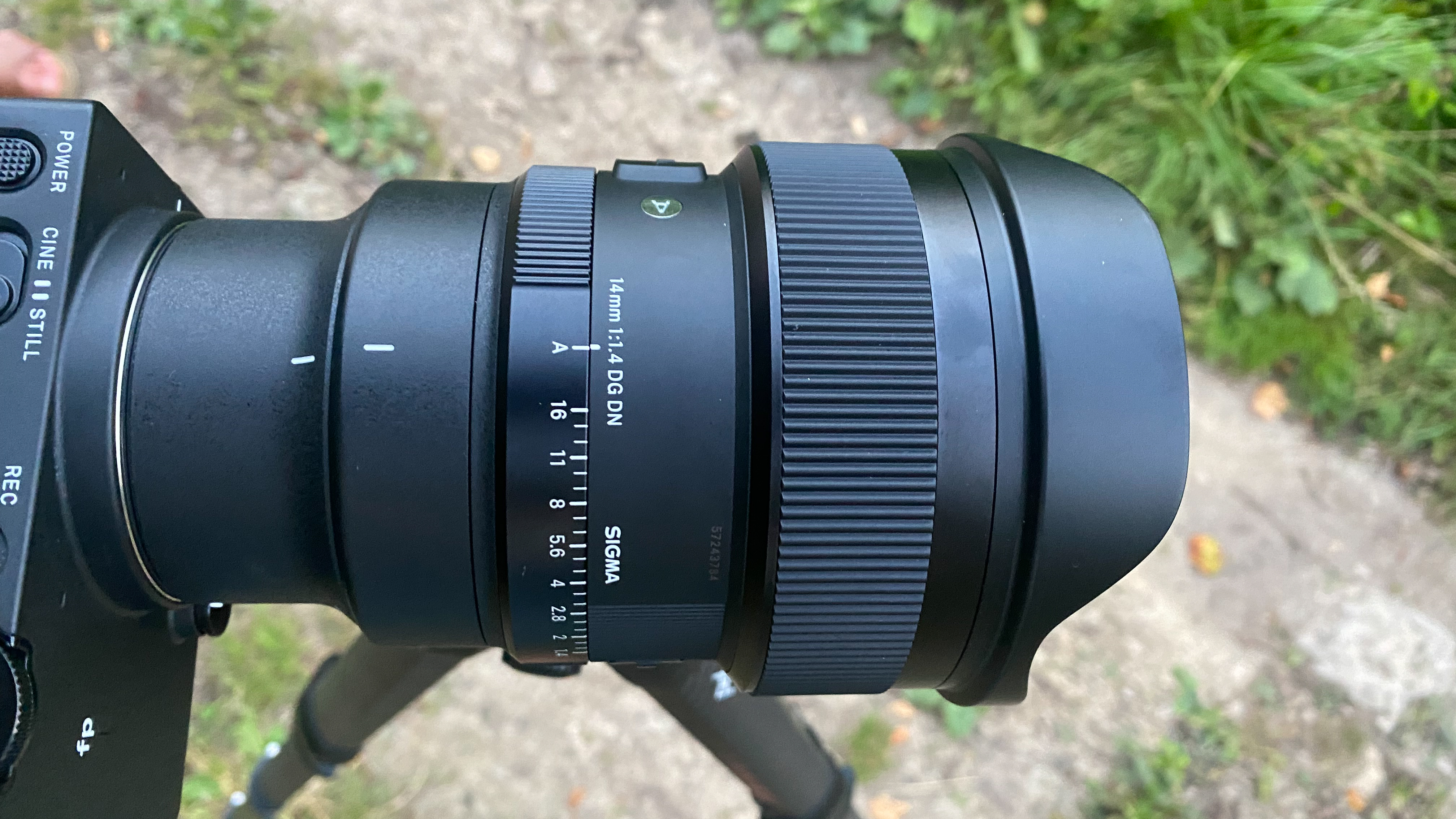
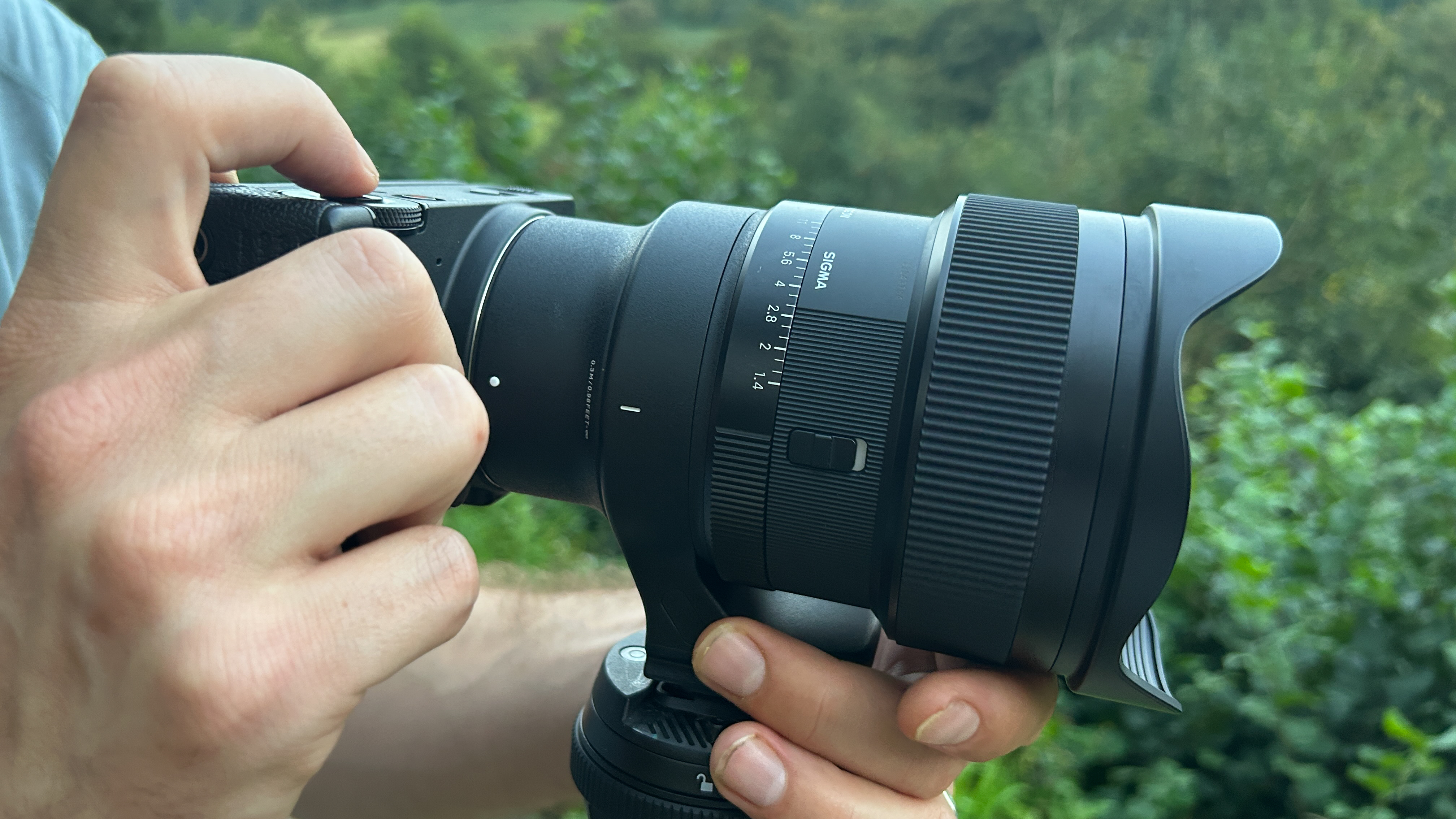
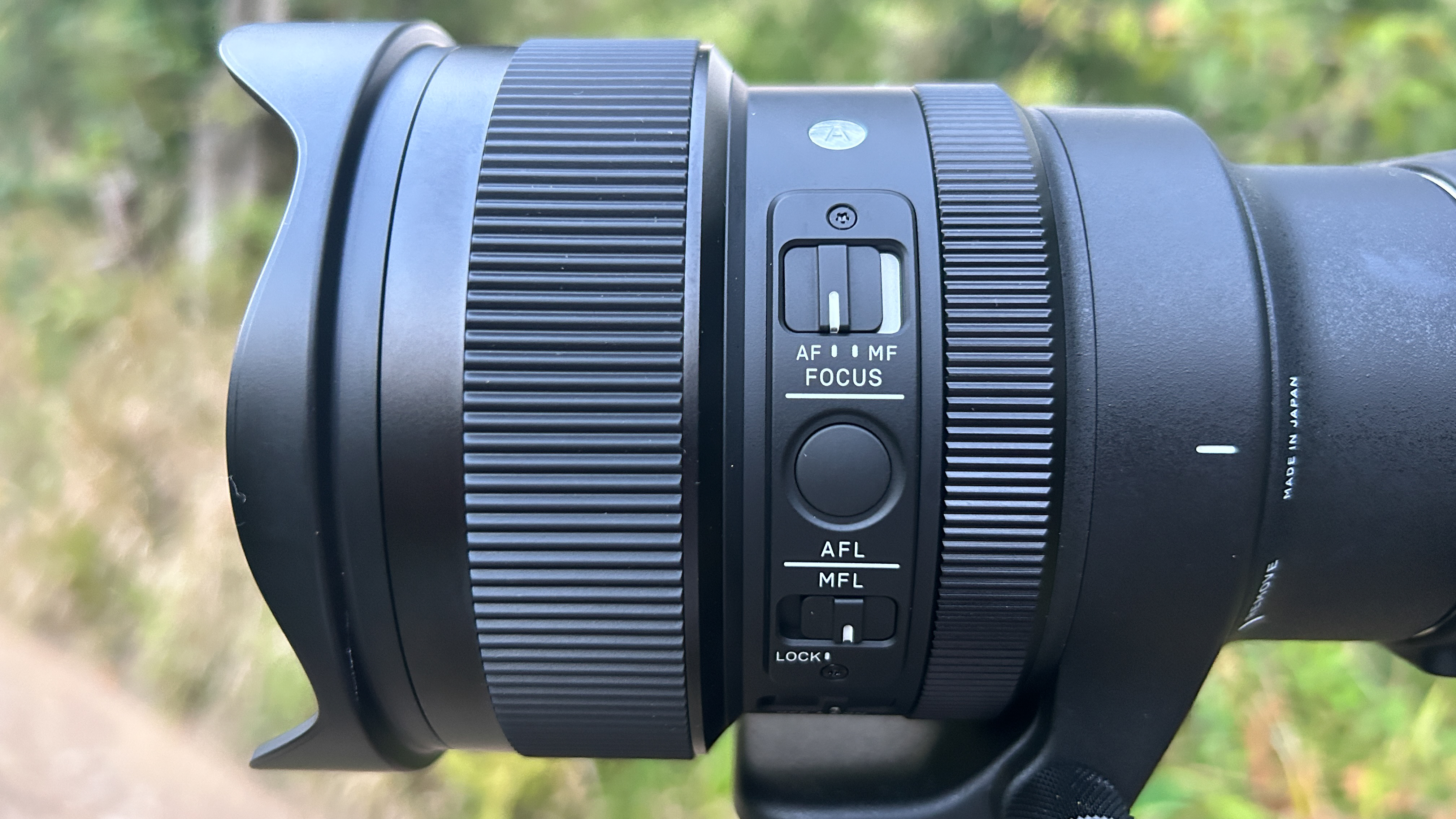
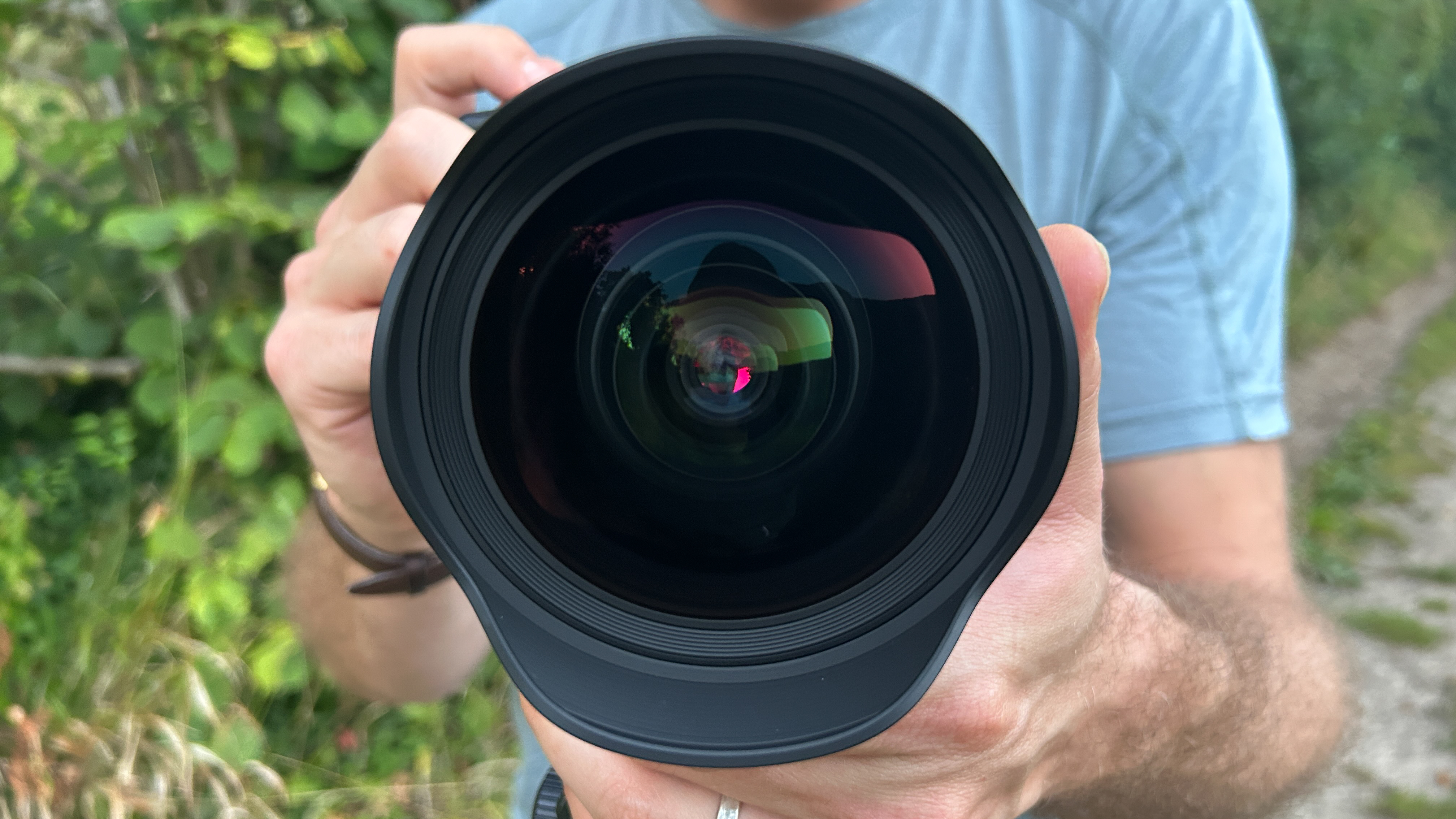
Specifications
Reasons to buy
Reasons to avoid
✅ You want the best: Optically, we think this might be the best lens for astrophotography out there.
✅ Maximum aperture is important: A maximum of f/1.4 is ideal for astro.
✅ Build quality matters: This lens is built to last.
❌ You need something lightweight: This lens is quite heavy and best used with a tripod.
❌ Zoom is important: The fixed 14mm focal length can be restrictive for some.
🔎 The Sigma 14mm f/1.4 DG DN Art lens is staggeringly good for astrophotography. Better yet, its speedy autofocusing and the ability to de-click the aperture ring for video make it useful for hybrid shooting as well. ★★★★½
The Sigma 14mm f/1.4 DG DN Art is ideal for astrophotography thanks to its ultra-wide 14mm view and impressive low-light capabilities.
Design: The Sigma 14mm f/1.4 DG DN Art is not a small lens. In fact, it's absolutely huge, but it's exceptionally well-made and feels like it's built to last. We love how it feels to handle, but we wouldn't recommend it for long periods of handheld use due to its weight, and you'll certainly need a tripod to get the most out of it. It has a clever lens cap that can also be used as a filter holder, and it can even be used with the lens hood on.
Performance: This lens gives you excellent sharpness across the whole image, which is impressive for such a wide lens. During our Sigma 14mm f/1.4 DG DN Art Lens review, we found that distortion is minimal, even at the edges. The autofocus is quick and precise, and the manual focus ring is very enjoyable to use. It's great in low light, letting you use higher ISOs to capture sharp stars easily.
Functionality: This Sigma lens offers a range of features that extend its use outside astrophotography as well. Aperture control is seamless, with a manual ring that features detents at every third of a stop as well as an auto mode. This lens also has a switch to unclick the control when shooting video. Filters can only be applied at the mount end due to the bulbous front element, but the lens includes Sigma's GP-11 filter holder at the back to make this as easy as possible.
Although the Sigma 14mm f/1.4 DG DN Art could be used for architecture, portraiture and live event photography as well, it's probably best suited to specialist astrophotography where its low-light abilities remain unbeaten.
- Read our full Sigma 14mm f/1.4 DG DN Art Lens review
Attributes | Notes |
|---|---|
Design | Sturdy but bulky. |
Performance | Incredible sharpness and no noticeable distortion. |
Functionality | Fast aperture for night sky shooting. |
Best Sony lens

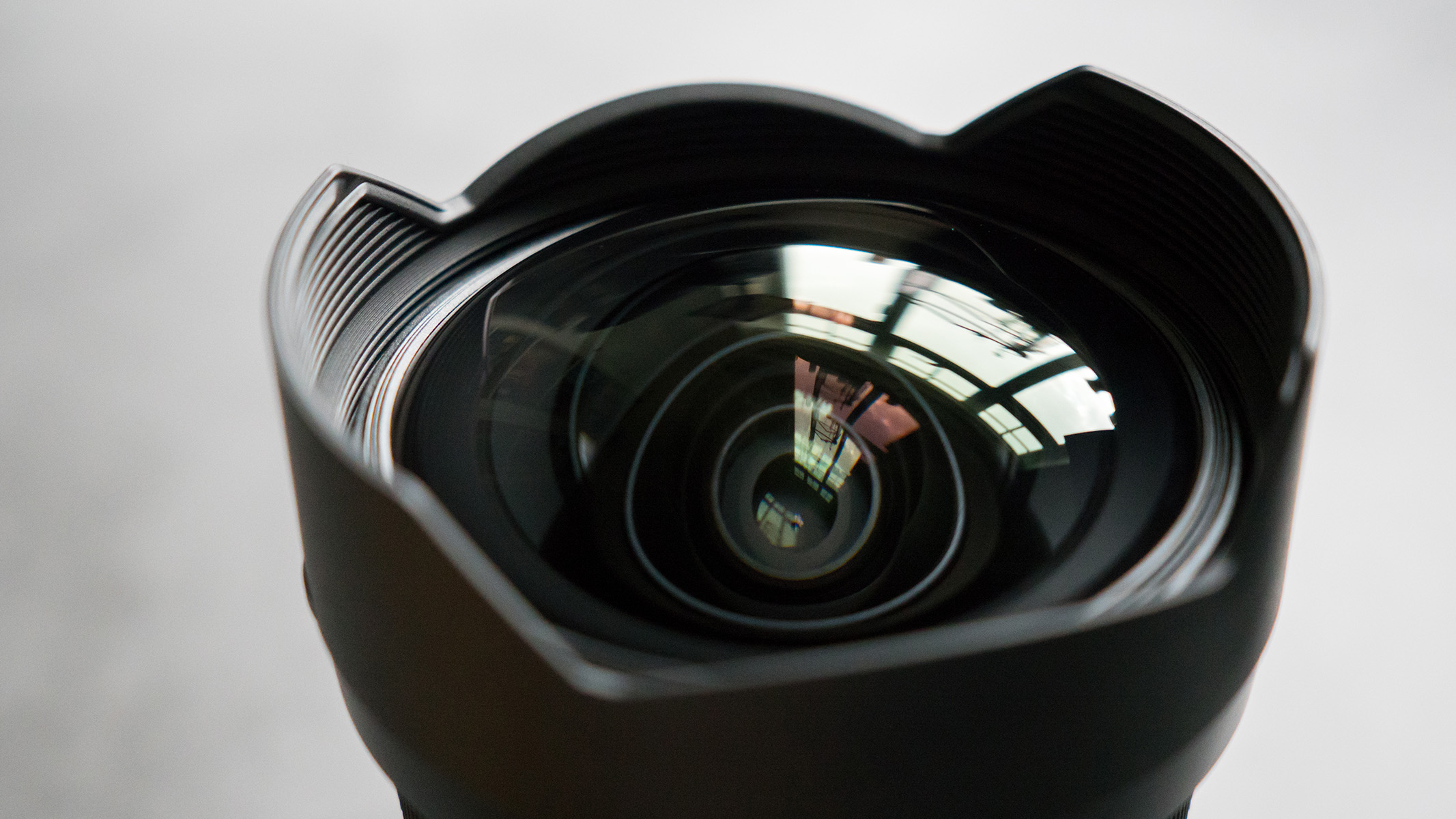
Specifications
Reasons to buy
Reasons to avoid
✅ You want exceptional image quality: This lens has incredible optical clarity.
✅ You want a large viewing angle: The shortest focal length gives an angle of 122 degrees.
❌ You're on a budget: this lens is one of the most expensive on this list.
❌ You use front filters: they are not supported on this lens due to the domed glass.
🔎 The Sony FE 12-24mm f/2.8 GM is great if you don't want to commit to one photography niche. It is versatile enough to have the option to use the wider 12mm for nighttime shots, while also being able to zoom in for daytime landscapes. ★★★★
Design: The Sony FE 12-24mm f/2.8 GM belongs to Sony's elite 'G-Master' lens series, renowned for outstanding quality. If you're looking for an ultra-wide-angle lens with excellent build quality without the added weight, it's incredibly attractive, though it's also one of the priciest options in this guide.
With its f/2.8 aperture and remarkably wide field of view, it offers exceptional performance. Despite this, the Sony FE 12-24mm f/2.8 GM maintains a relatively light weight and compact design compared to others in this guide, weighing just 1.87 lbs (847g).
The lens has a built-in petal-shaped hood to protect the bulbous glass element, which means you can't attach a filter to the front. However, there is a slot on the back of the lens where you can use gel filters.
Performance: In our Sony FE 12-24 f/2.8 GM lens review, we called the sharpness of this lens is "almost unrivaled". The image quality it can capture is incredible: Whether you're shooting the stars or a landscape, you're going to get fantastic, sharp, colorful results. We found the sharpness maintains throughout the full focal length range, even at the widest aperture (f/2.8).
Functionality: At its shortest focal length of 12mm, this lens offers a wide viewing angle of 122 degrees, ideal for capturing large areas of the Milky Way, for example. Many other lenses can only capture such a wide view by stitching together multiple photos into a panorama.
If you want excellent quality for astrophotography and can afford it, this Sony lens is a great choice. It's expensive, but its versatility makes it a long-lasting, all-in-one wide-field astro lens. As a zoom lens, it can also be used for other types of photography. If you have a smaller budget but still want an ultra-wide-angle lens for astrophotography, the next one on this list might be a better option.
- Read our full Sony FE 12-24 f/2.8 GM lens review
Attributes | Notes |
|---|---|
Design | Very sturdy and well-built, light for its size. |
Performance | Incredibly sharp. |
Functionality | Fixed f/2.8 aperture. |
Best Nikon Z-mount

Nikon Z 14-24mm f/2.8 S
Our expert review:
Specifications
Reasons to buy
Reasons to avoid
✅ You want a lightweight lens: At just 1.4 lbs, this is one of the lighter picks on this list.
✅ You use filters a lot: Both front and rear filters are supported.
✅ You want to reduce post-processing: This lens creates minimal aberrations, so you'll need to do less editing.
❌ You're on a budget: this lens is one of the more expensive ones on this list.
❌ You already own filters: this lens requires large 112mm filters.
🔎 The Nikkor Z 14-24mm f/2.8 S combines a lightweight and compact design with exceptional image quality. It creates very few aberrations and has a handy LCD display. ★★★★½
Design: This Nikon zoom lens is the most compact among full-frame f/2.8 ultra-wide-angle zoom lenses, measuring only 5 inches (124.5mm) in length and weighing just 1.7 lbs (650g). It's also completely weather-sealed to protect against different weather conditions.
Compared to similar lenses from other brands, this lens has a less protruding and rounded front element. This allows you to easily attach 112mm filters to the front using the included lens hood, which makes it more versatile for both daytime and astrophotography. These filters can be a bit pricey as they're so big, but having the option is valuable. On the plus side, you won't need to purchase a separate rear filter system.
Performance: It comes as no surprise that the Nikon Z 14-24mm f/2.8 S's image quality is second to none. It creates outstanding images, and we've encountered minimal distortion, vignetting and aberrations in our captures across the full aperture range.
Functionality: This lens has a wide aperture and provides a broad view at its shorter focal lengths. The customizable Lens Function (L-fn) button allows users to quickly change exposure and adjust settings without having to flick through endless menus, which is useful when you need to act fast to avoid missing a shot.
It's worth noting that the LCD featured on the lens barrel comes in incredibly useful for astrophotography in particular, since it allows you to make necessary adjustments to your settings without needing to use a headlamp.
Attributes | Notes |
|---|---|
Design | Lightweight and compact. |
Performance | No noticeable coma or aberrations. |
Functionality | Fast f/2.8 constant aperture. |
Best widely compatible prime


Specifications
Reasons to buy
Reasons to avoid
✅ You want exceptional image quality: You can't get much better results than with this lens.
✅ You want a large maximum aperture: With a range of f/1.8 - f/16, this lens is hard to beat.
✅ You want a sturdy lens: The high-quality build means this lens will last.
❌ You want a lightweight lens: At 2.58 lbs, this isn't the lightest lens on this list.
❌ You want a versatile focal length: The 14mm fixed focal length is a bit niche.
❌ You use filters a lot: This lens isn't equipped with a filter thread.
🔎 The Sigma 14mm F1.8 DG HSM ART lens is a phenomenal lens for night-sky photography. If you’re after a lens that will get you long shutter speeds without a star tracker, with technically excellent results throughout its aperture range, this is a piece of kit that will serve you well. ★★★★★
Design: Our review of the Sigma 14mm f/1.8 DG HSM Art is positively glowing, and we awarded the lens a full five stars. That said, one of the first things we noticed is just how heavy this lens is. Weighing 2.58lbs (1.17kg), it's much heavier than many other lenses on the market, and so if you're shooting handheld you may get tired of holding it very quickly. However, that weight speaks to how well made the lens is: It's built to last, and packs incredible optical quality.
If you're shooting astro, you'll likely be using a tripod anyway, so that extra weight shouldn't be too much of a factor. It's worth overlooking if you care about capturing beautiful photos, because the Sigma 14mm f/1.8 DG HSM Art is more than capable of delivering outstanding results.
As an added benefit, the lens is fully weather-sealed, so if you find yourself shooting in bad weather, you don't need to worry about damaging your equipment. One thing to note, though, is that due to the Sigma 14mm f/1.8 DG HSM Art's front element being big and rounded, you can't use any filters on the front.
Performance: Optical performance is where this lens excels, providing incredible image quality. The chromatic aberration (color fringing) is minimal even when shooting at wide apertures and you won't have any significant issues with image distortion — something which certainly cannot be said for all ultra-wide lenses.
Even at its widest f/1.8 aperture, the stars remain sharp and clear all across the frame. However, closing the aperture slightly can help minimize distortion in the corners of the image frame when you're shooting wide open.
As far as ultra-wide lenses go, the Sigma 14mm f/1.8 DG HSM Art is close to unbeatable in terms of its performance and quality.
- Read our full Sigma 14mm f/1.8 DG HSM Art review
Attributes | Notes |
|---|---|
Design | Well built, but can feel heavy. |
Performance | Outstanding image quality. |
Functionality | Wide maximum f/1.8 aperture. |
Best Canon RF lens
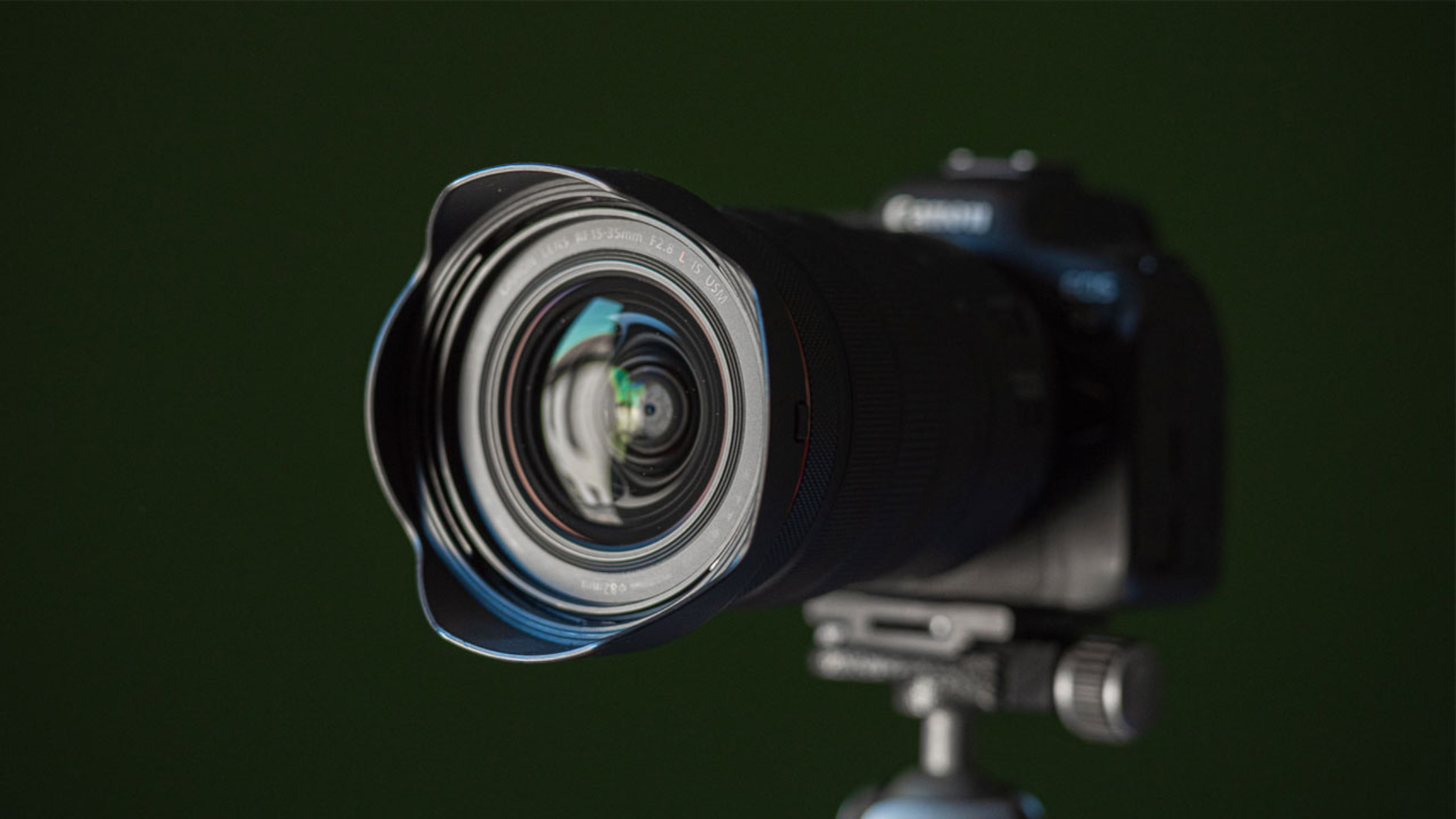
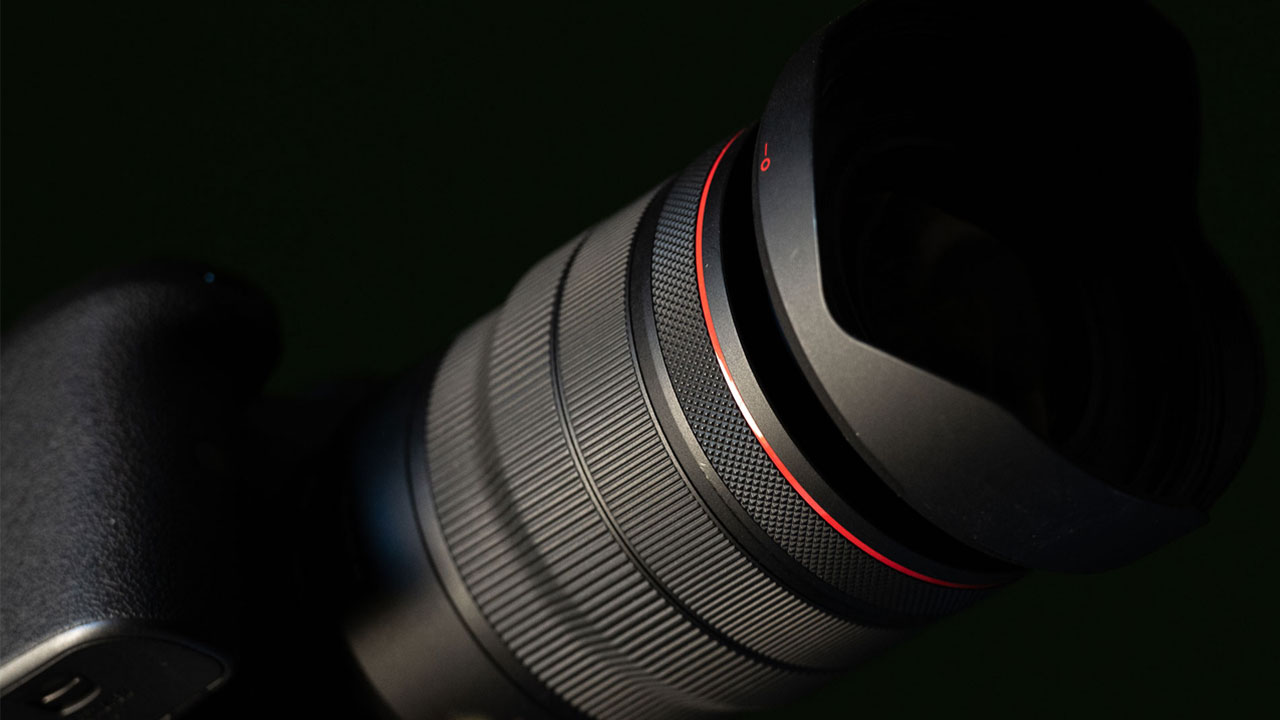
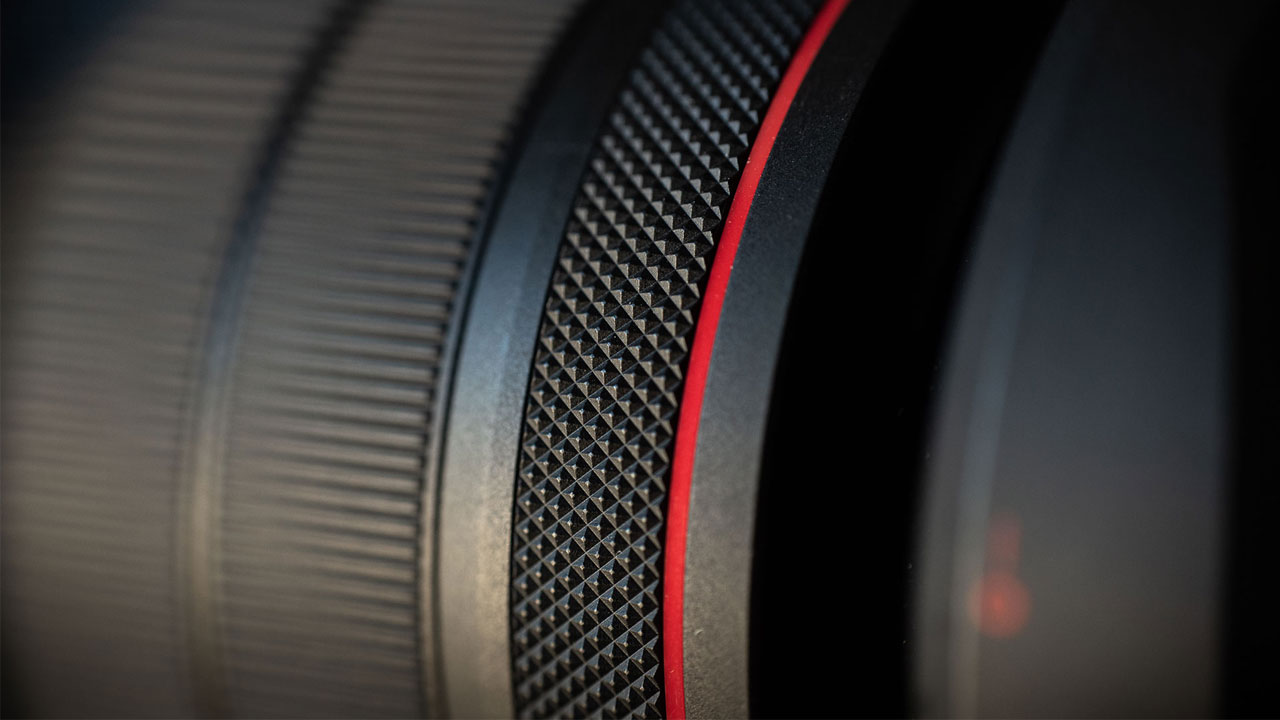

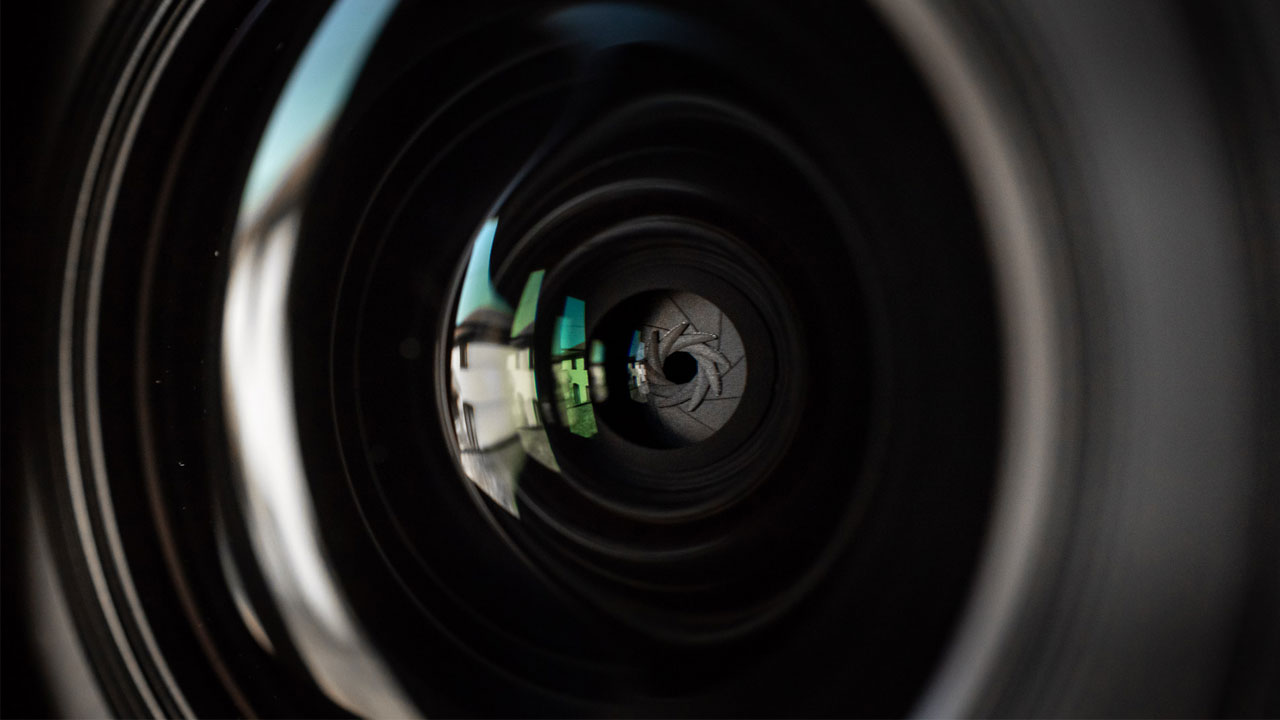
Specifications
Reasons to buy
Reasons to avoid
✅ You want excellent image quality: This lens uses the highest quality L-series glass to guarantee stellar results.
✅ You want a portable lens: This is designed to be carried around, weighing just 1.85 lbs.
✅ You want good image stabilization: This lens has 5-stops of IS.
❌ You're on a budget: This lens is one of the more expensive ones on this list.
❌ You want edge-to-edge sharpness: It reveals softer edges at f/2.8.
🔎 The Canon RF 15-35mm f/2.8L IS USM is the brand's best ultra-wide zoom lens, so it's a sound investment for photographers. Unfortunately, it’s also quite pricey, so it may put off those on stricter budgets. ★★★★½
Design: The Canon RF 15-25mm f/2.8 IS USM has a simple and sleek design, with just two buttons to operate the autofocus/manual focus and stabilizer. It has the same shape down the entire length of the lens barrel, so it's easy to store away in whatever camera bag you use.
This lens has a large 82mm filter thread at the front, allowing you to attach screw-in filters directly without the need for an adapter. We particularly liked how smoothly and quietly the focal length and focus rings operate, making it excellent for shooting time-lapses and recording videos.
Performance: In our Canon RF 15-25mm f/2.8 IS USM review, we tested the lens out with the Canon EOS R6 camera and were extremely impressed with the results. The autofocusing speed was excellent and the lens produced super sharp images. We only noticed a tiny amount of sharpness dropping off right at the very edge of the frame, and that's only when we were shooting wide open at f/2.8.
When we reviewed the images we took, we observed a minor chromatic aberration at the edge of the image, but it was only noticeable when zoomed in to 400%. While this isn't perfect, especially for astrophotographers shooting with wide apertures, the overall image quality remained stunning.
Functionality: Unlike most of the other lenses we've included in this guide, the Canon RF 15-35mm f/2.8L IS USM is a zoom lens. It has a range of 15-35mm, so it's versatile as well as great for astrophotography. It's wide enough for gorgeous panoramic landscape shots and capturing the night sky, but can also be used for detailed close-ups.
We love the strong image stabilization offered by this lens too: It provides five stops on its own, and if you're using a Canon RF mount camera with its own in-body stabilization, that goes up to eight stops. If you're planning on using it handheld, that's a gamechanger.
- Read our full Canon RF 15-25mm f/2.8 IS USM review
Attributes | Notes |
|---|---|
Design | Sleek & portable design. |
Performance | Softer images at f/2.8. |
Functionality | Has 5 stop image stabilization. |
Best Sony prime lens
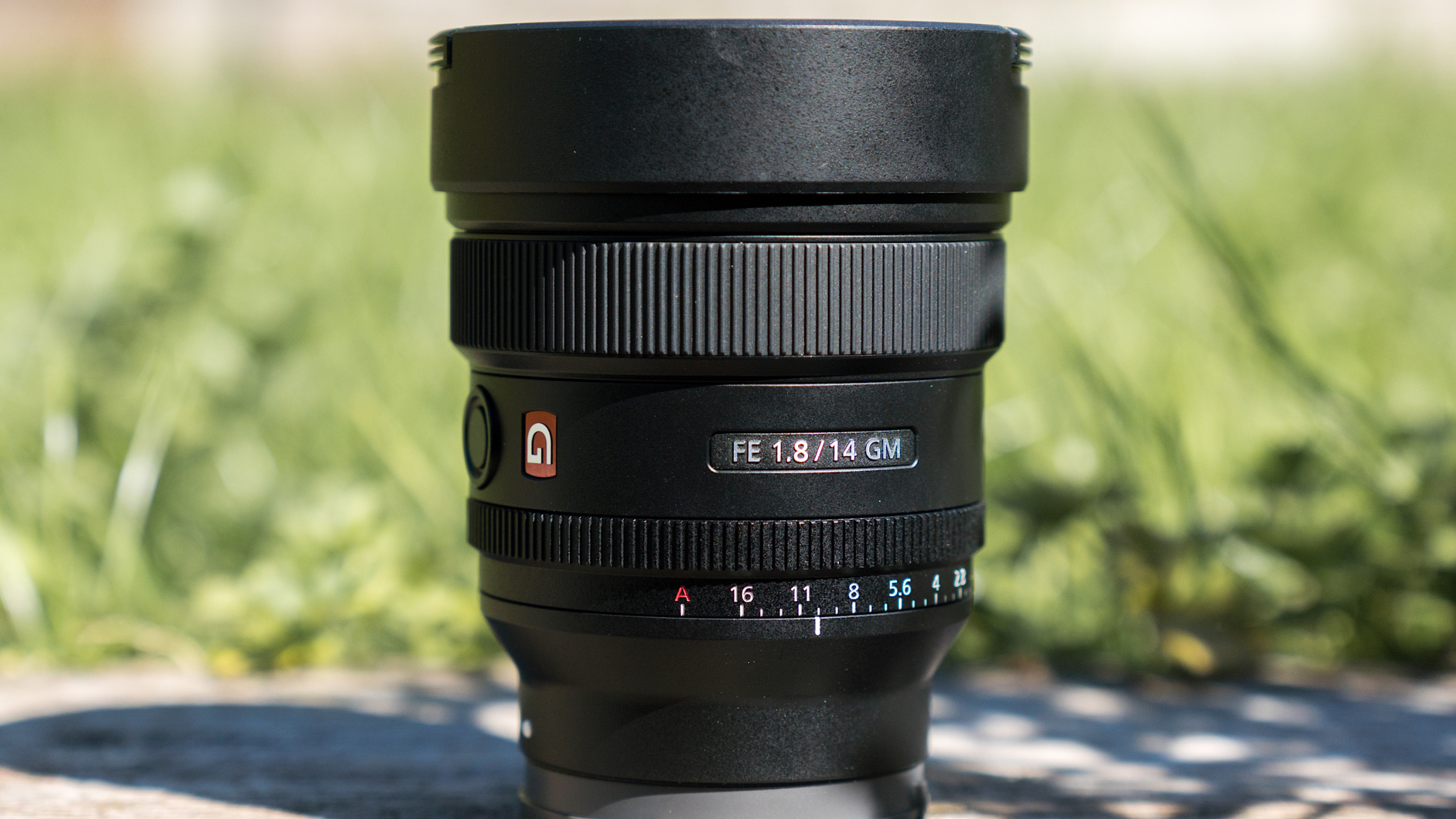
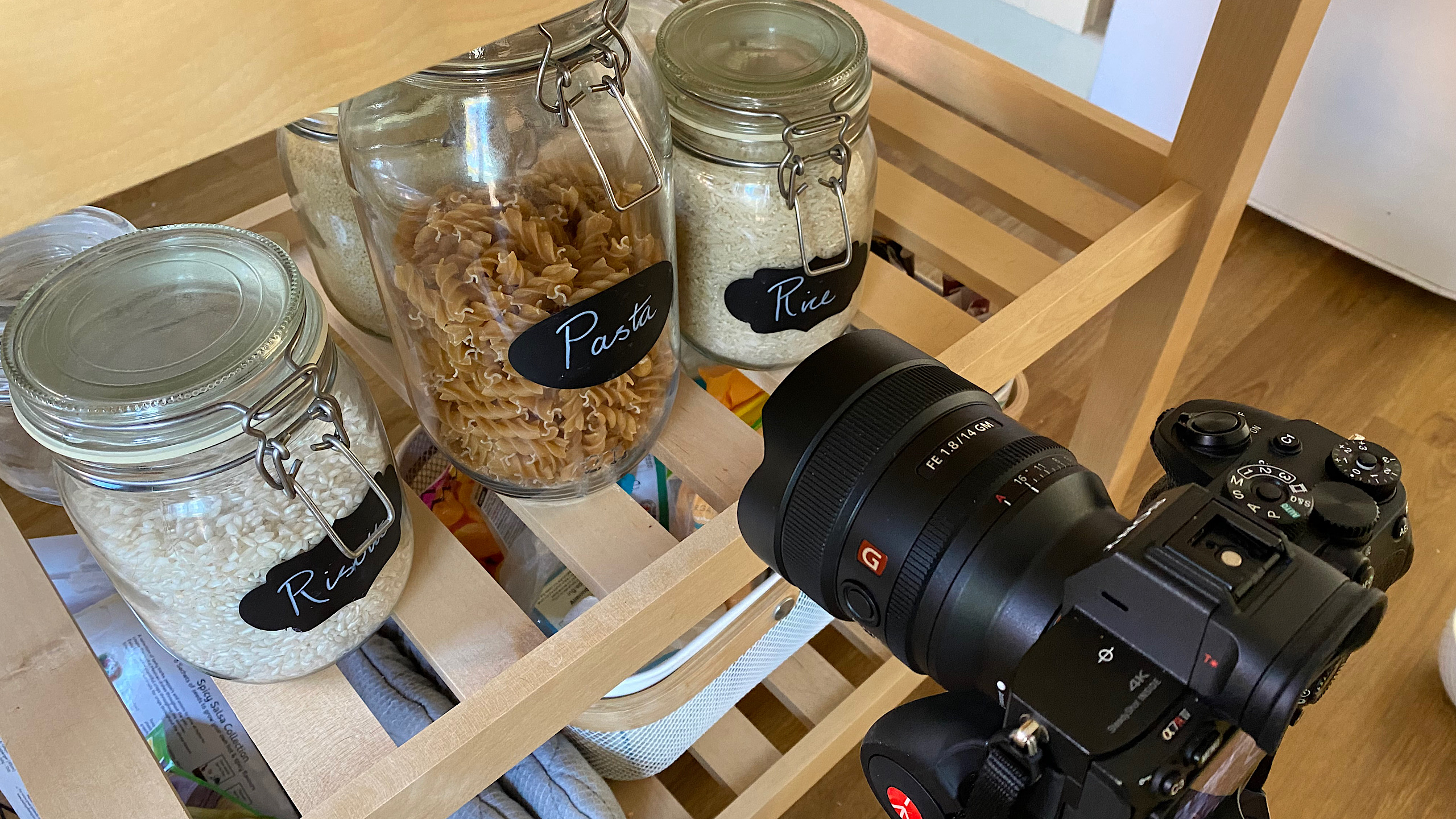
Specifications
Reasons to buy
Reasons to avoid
✅ You want a lightweight lens: At just 1.01 lbs, this is one of the lighter lenses on this list.
✅ You care about the looks: This lens has an excellent build and design.
✅ You want outstanding image quality: The results obtained with this lens are impressive.
❌ You use front filters: They're not supported.
❌ You want image stabilization: This lens is not equipped with Sony's Optical SteadyShot technology.
🔎 The Sony 14mm f/1.8 G Master is ideal for seasoned astrophotographers or professional street photographers that need a wide field of view combined with sharp optics and a fast f/1.8 maximum aperture. ★★★★½
Design: In our review of the Sony FE 14mm f/1.8 G Master lens, we really liked the clickable aperture ring option, which allows for easy aperture adjustment even in situations where the screen isn't very visible, for example if you shoot from low angles. However, it's worth noting that you can't use filters on the front of the lens due to the bulbous front element, so any filters will need to be attached to the back of the lens.
A big selling point of the Sony FE 14mm f/1.8 G Master lens is that it's unbelievably lightweight for a 14mm ultra-wide lens. At only 1.01 lbs (460g), it's 2.5x lighter than Sigma's 14mm f/1.8 DG HSM Art lens and doesn't look at all out of place on a full-frame camera body. This featherweight design makes it a dream to use, particularly if you like having the option of shooting handheld.
Performance: During our testing, we've had exceptional results from the Sony FE 14mm f/1.8 GM. The images produced are clean and sharp, full of beautiful colors and contrast, and even when shooting at the widest aperture of f/1.8, there have been no signs of barrelling, chromatic aberration or distortion. We did notice a small amount of vignetting, however, but that can easily be fixed in post-processing.
Aside from its incredible sharpness, we also love the bokeh and dramatic sun star effects that the Sony FE 14mm f/1.8 GM is able to capture at apertures down to f/4. Because of this, we've found it to be a very versatile lens, suitable for both daytime shooting and astro work.
Functionality: This lens excels in low light thanks to its fast f/1.8 aperture, which allows you to use longer shutter speeds in order to capture things like star trails. The wide angle lets you capture large areas of sky as well as easy close-up shots during the day alongside its effective autofocus. The only thing it lacks is image stabilization, but with many cameras featuring in-body stabilization these days, this may not be a dealbreaker.
- Read our full Sony FE 14mm f/1.8 GM review
Attributes | Notes |
|---|---|
Design | Surprisingly compact and lightweight. |
Performance | Beautiful image quality. |
Functionality | No image stabilization, but it doesn't suffer for it. |
Best for versatility
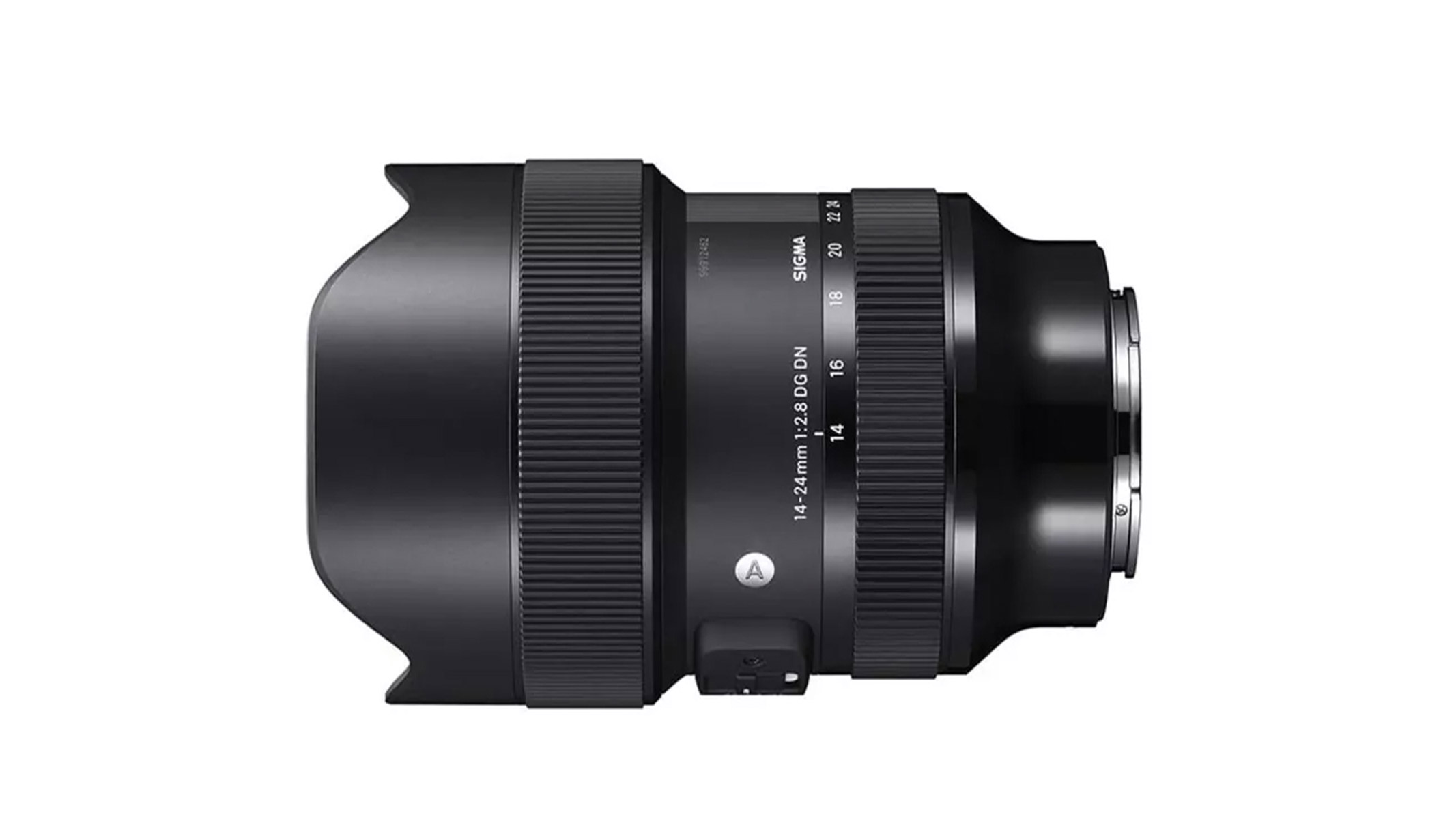

Specifications
Reasons to buy
Reasons to avoid
✅ You want excellent optical clarity: This lens' is almost perfect.
✅ You want a flexible focal range: With a range of 14-24mm, this lens gives you options.
✅ You want a sturdy lens: This has an excellent build quality.
❌ You want a lightweight lens: At 2.54 lbs, this isn't one of the lightest lenses in this guide.
❌ You use filters a lot: This lens has no filter threads.
❌ You want a large maximum aperture: This lens taps out at f/2.8.
🔎 The Sigma 14-24mm F2.8 DG HSM ART is a fantastically useful lens for astrophotographers. It easily holds its own against other high-end, wide-angle, big-aperture lenses, and it does so at an impressively low price tag. ★★★★★
Design: The Sigma 14-24mm f/2.8 DG HSM is another lens from Sigma's 'Art' range, which is renowned for its optical quality and high-class engineering. This lens is optimized for full-frame cameras and has the robust build quality we've come to expect from Sigma lenses. It features smooth zoom and focus rings, and its autofocus is both fast and almost silent, making it great for daytime shooting and video recording.
When we reviewed the Sigma 14-24mm f/2.8 DG HSM, we noted the similarity to Sigma's 14mm f/1.8 DG HSM Art lens. However, the f/2.8 version has the advantage of a 14mm to 24mm zoom range, increasing its versatility for various types of photography.
There are many mounting options available with this lens. It's primarily compatible with Nikon and Canon cameras, but if you have the Canon version, you can also use it on the Sony E-Mount system with Sigma's MC-11 mount converter.
Performance: The Sigma 14-24mm f/2.8 DG HSM delivers vibrant and sharp images with clean star rendering across the frame and little-to-no chromatic aberration even at its widest f/2.8 aperture. Sigma claims that there's absolutely no image distortion on the Sigma 14-24mm F2.8 DG HSM ART lens, which is a bold statement to make, but after testing it extensively, we have to admit is true.
Functionality: This is a zoom lens with a range of 14-24mm, giving it a bit more versatility than some of the other lenses we've selected in this guide. It does have a downside, however, in that its maximum aperture is a little narrower than others, but that's true of most zoom lenses. That said, with f/2.8 maximum aperture, the Sigma 14-24mm f/2.8 DG HSM is still more than wide enough for astrophotography, even if it doesn't let in quite as much light as an f/1.8 or f/1.4 would. The extra functionality given by the zoom is a good trade-off; whether it's worthwhile is up to you and the type of photography you shoot.
- Read our full Sigma 14-24mm f/2.8 DG HSM review
Attributes | Notes |
|---|---|
Design | Strong, robust build quality Sigma is known for. |
Performance | No image distortion and little to no aberration. |
Functionality | Constant f/2.8 aperture. |
Best Canon EF lens

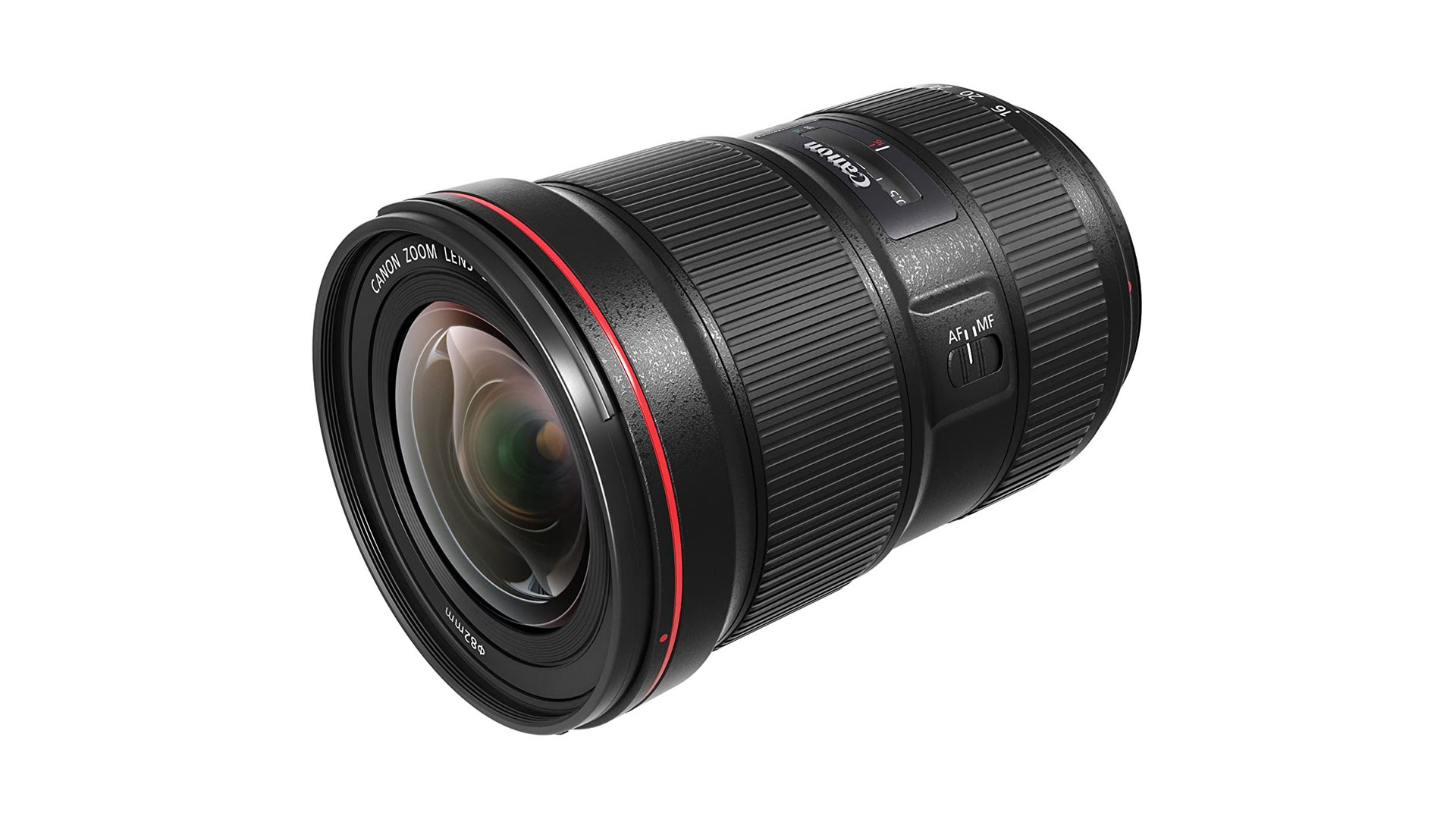
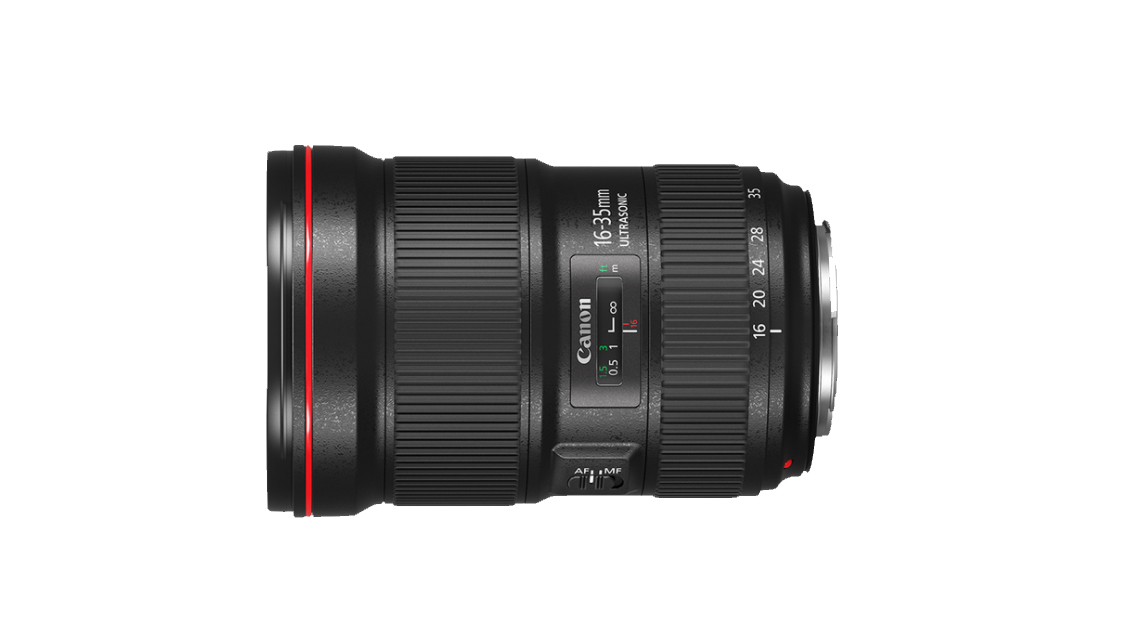
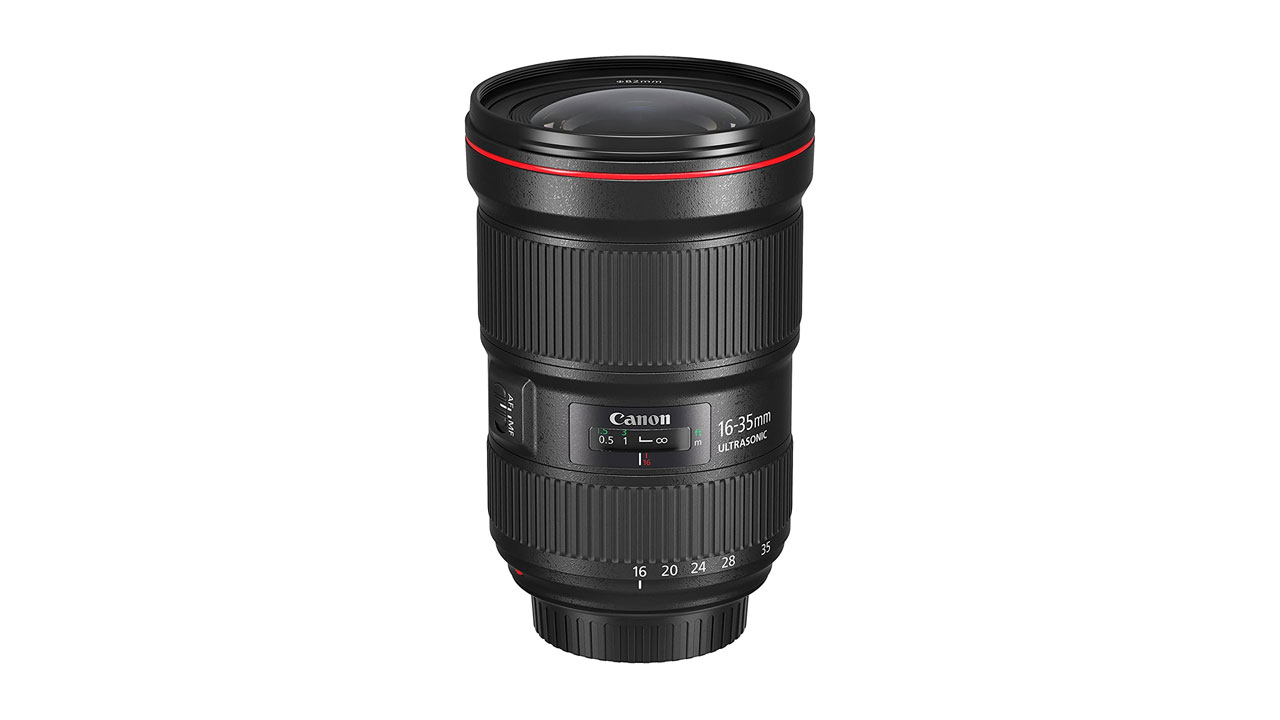
Specifications
Reasons to buy
Reasons to avoid
✅ You want good autofocus: It's fast and accurate on this lens.
✅ You want to produce sharp images: The quality is amazing across the field.
✅ You want to reduce post-processing: This lens can correct chromatic aberration and distortion.
❌ You want image stabilization: It is not equipped on this lens.
❌ You're on a budget: This lens is on the expensive side.
❌ You want a large maximum aperture: This lens taps out at f/2.8.
🔎 For the more experienced photographers for whom this lens is aimed, the Canon EF 16-35mm f/2.8L III USM is certainly worthy of serious consideration if wide-field photography (either astronomical or terrestrial) is one of your areas of interest. ★★★★★
Design: Coming from Canon's 'L' line of lenses, you know you're getting an incredibly high quality lens here. The range is a favorite among photographers, so whether you're already a pro or just starting out, the Canon EF 16-35mm f/2.8L III USM will stay in your camera bag for a long time to come.
The third iteration of this particular lens from Canon, the Mark III, improves on its predecessor in numerous ways. It's a fast and precise lens thanks to the USM autofocus system; you'll probably prefer to use manual focusing when shooting astro, but it's a welcome feature which makes the lens suitable for daytime use too.
Despite having a focal range that spans 20mm of versatility, the Canon EF 16-35mm f/2.8L III USM has a constant aperture of f/2.8, which is more than enough for astrophotography, but far from the highest in this guide.
Performance: This lens can effectively fix chromatic aberration and distortion, although very meticulous users might detect slight distortions at the extreme corners of the image. However, you'd only notice this when closely inspecting the entire image at high magnification (often known as pixel peeping), so it's unlikely to be a major concern for most users.
The Canon EF 16-35mm f/2.8L III USM's performance isn't flawless, but considering the f/2.8 design, it's remarkably impressive and far superior to cheaper lenses. Despite the higher price, this lens excels at capturing exceptional wide-field images of the night sky.
Functionality: During our Canon EF 16-35mm f/2.8L III USM review, we found it to be a major improvement over the Mk II in terms of image quality. Canon has greatly improved the autofocus system, diaphragm, and optics, allowing this lens to produce sharper images at the edges of the frame, even at the widest aperture settings and focal length.
Sadly, these upgrades have come at the expense of dropping the image stabilization, but this likely won't bother astrophotographers since it would need to be switched off for long exposure shooting at night anyway — not to mention the camera would also likely be on a tripod.
- Read our full Canon EF 16-35mm f/2.8L III USM review
Attributes | Notes |
|---|---|
Design | Sturdy and user friendly. |
Performance | Pin-sharp image quality across the field. |
Functionality | Fast and accurate autofocus. |
Best APS-C Sony lens

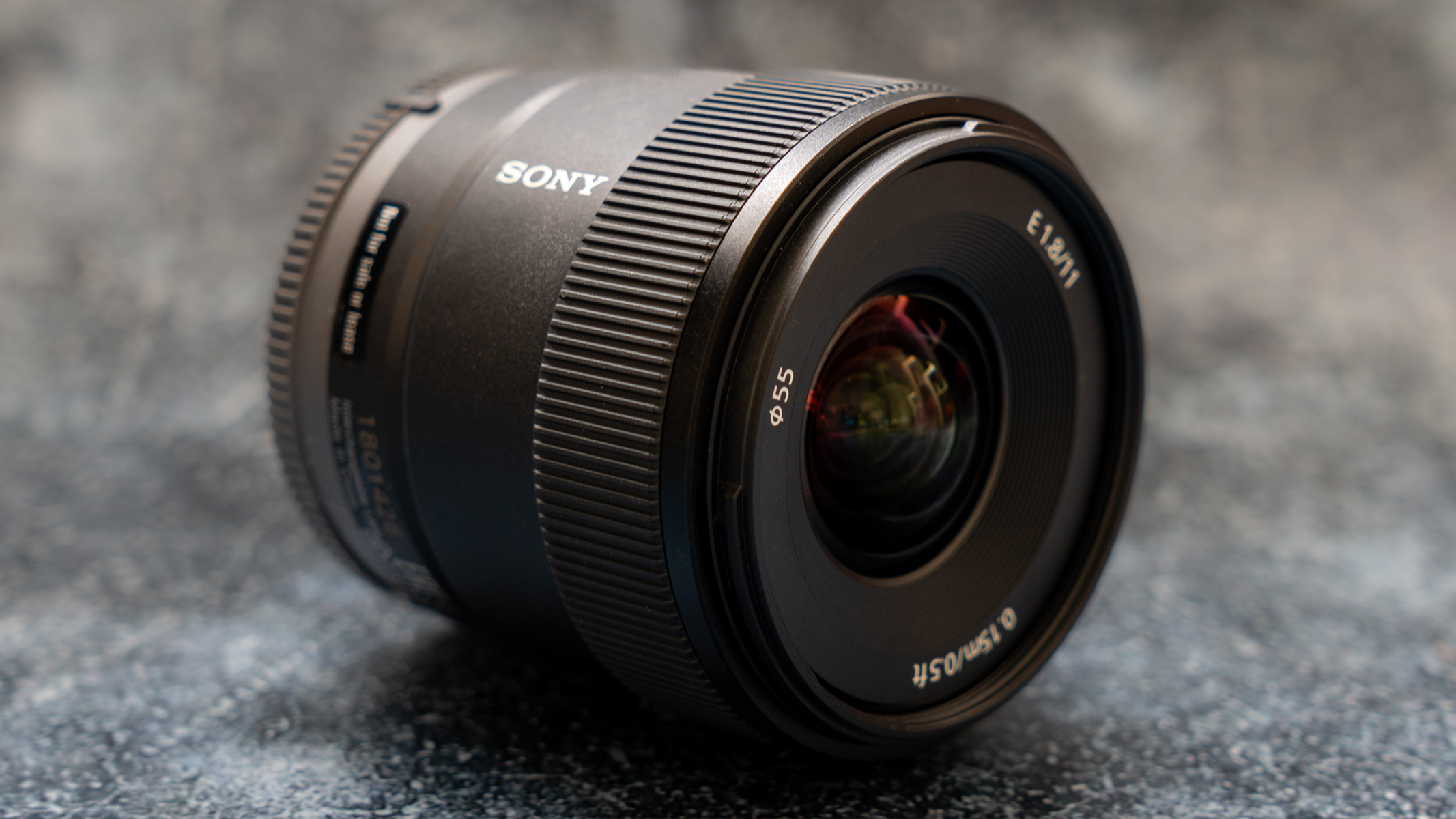
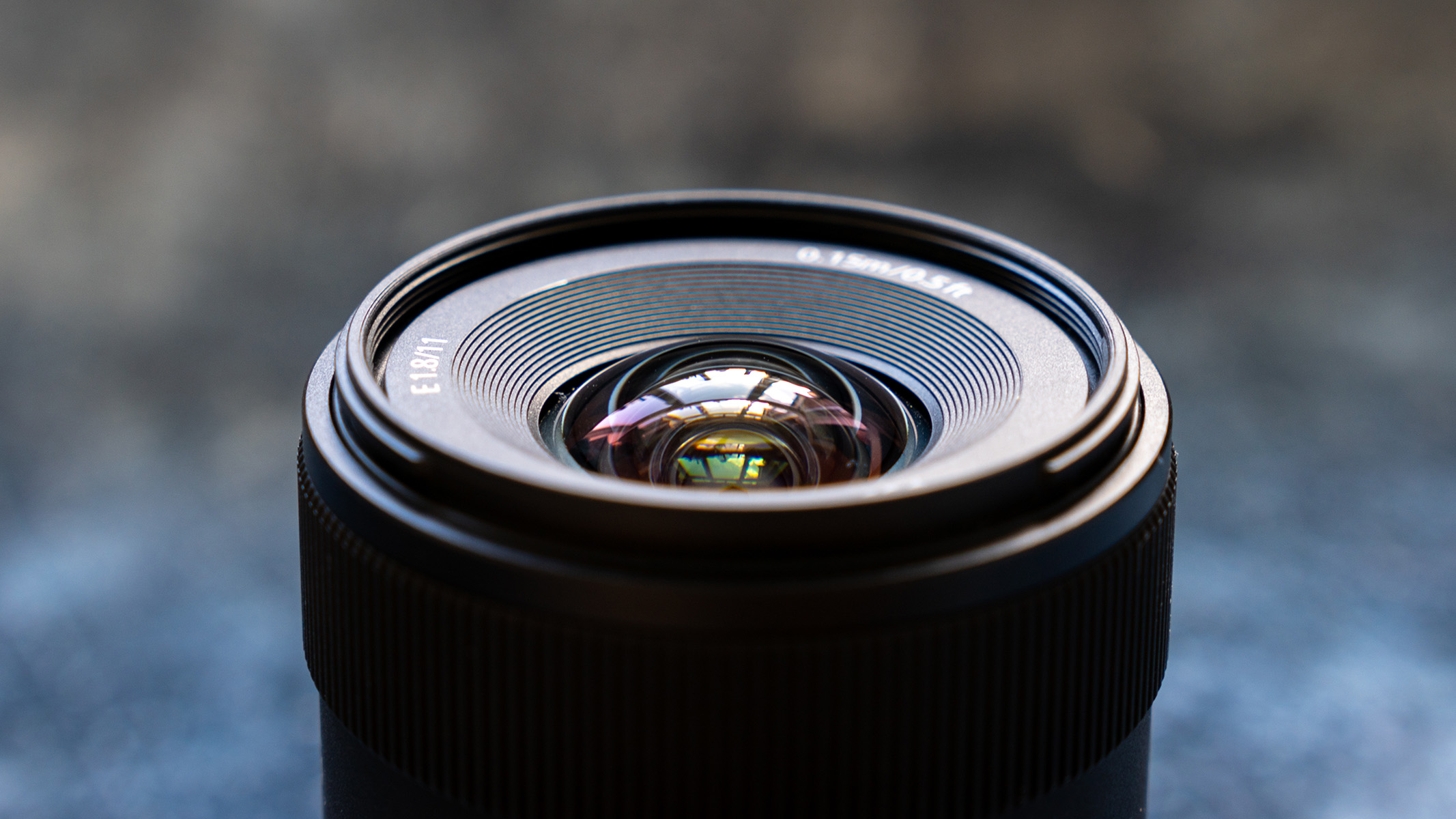

Specifications
Reasons to buy
Reasons to avoid
✅ You want to produce sharp images: The quality is impressive and the images are sharp.
✅ You're on a budget: For an astro lens, it's incredibly affordable.
❌ You want image stabilization: To keep the price down, there's no image stabilization in this lens.
🔎 The Sony E 11mm f1.8 has wholly revitalized Sony's APS-C lineup. This is the lens that crop sensor astro shooters have been waiting for: It's sharp, lightweight, affordable and produces fantastic results. ★★★★
Design: Despite being made of plastic, the Sony E 11mm f/1.8 lens feels well-built and sturdy. The focus ring is smooth and easy to use, and the glass is set back a bit, making it less bulbous than other lenses. This allows you to easily attach a flat lens cap or front filters, which can't be said for some other wide-angle lenses. The only slight niggle we had with the design was that the lens hood is visible in the field of view when it's attached, which makes it a bit redundant.
The lens is remarkably lightweight at only 6.4 oz (181g), making it convenient to toss into your camera bag and carry around without feeling the extra weight. The lens includes an autofocus/manual focus switch (although we found it a bit stiff to operate) and a custom button, which we thought was a nice extra feature.
Performance: In our Sony E 11mm f/1.8 review, we were very impressed with the image quality of this lens. The images are impeccably sharp all the way to the edge, and there's hardly any of the barrelling or lens distortion that you often find in ultra-wide-angle lenses.
While the Sony E 11mm f/1.8 is ideal for landscape photography too, we think this lens really shines in astrophotography. During our testing, we used it for long exposure shots, keeping the shutter open for 25 seconds, and the stars stayed brilliantly sharp with no sign of star trails. Considering the price of this lens, that's a fantastic result.
Functionality: For daytime shooting, we particularly appreciated the autofocus and tracking, which are great at detecting and following both human and animal eyes. With an aperture ranging from f/1.8 to f/16, this lens works well in different conditions. It's also fully weather-sealed to protect against dust and water, which is especially handy considering the lens hood issue.
The main thing to note is that you don't get any image stabilization with this lens, so it may not be the ideal choice for those looking to shoot videos or use longer shutter speeds handheld.
- Read our full Sony E 11mm f/1.8 review
Attributes | Notes |
|---|---|
Design | Very compact and lightweight. |
Performance | Sharp images with barely any defects. |
Functionality | No image stabilization. |
Best APS-C DSLR lens
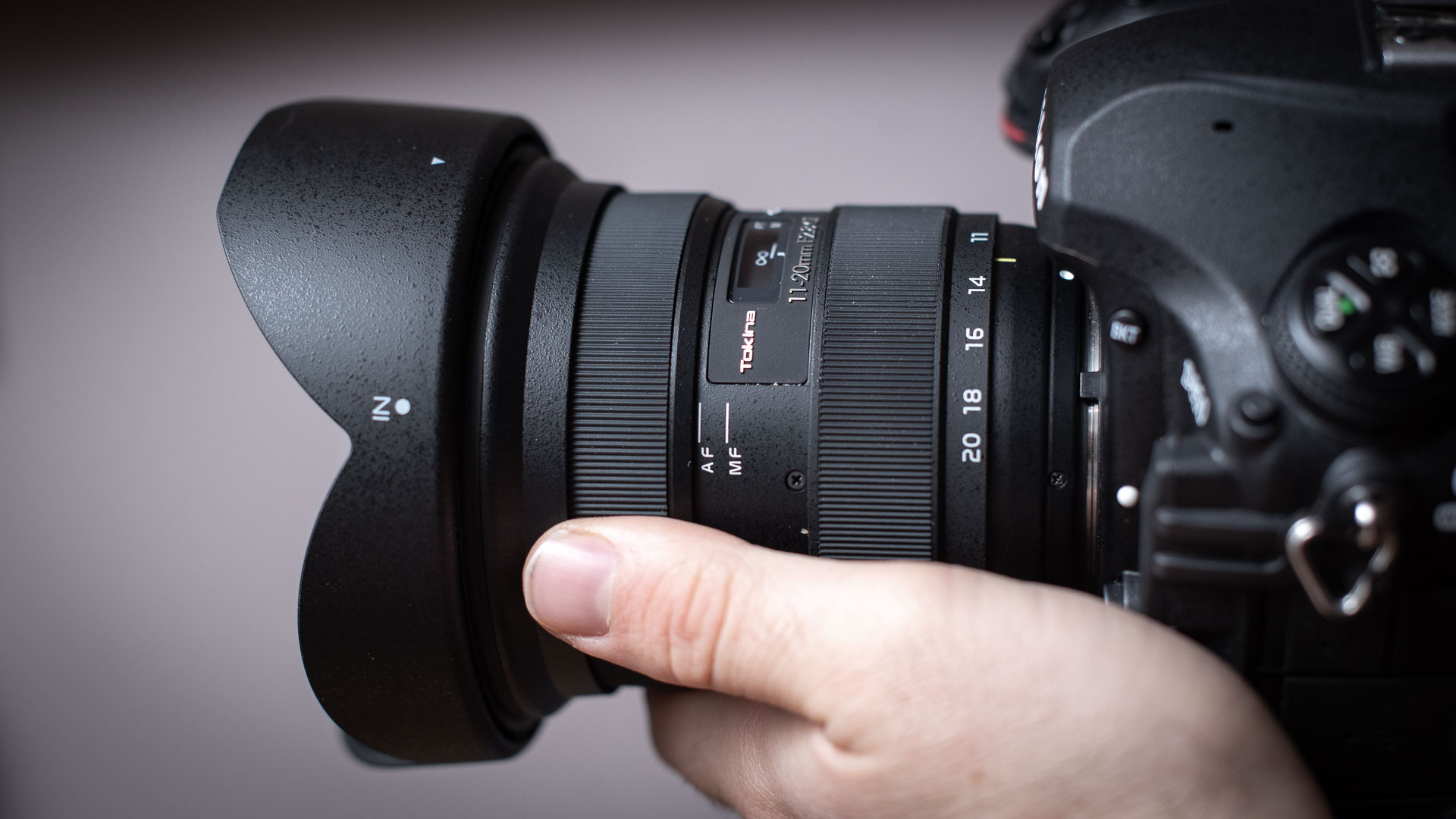
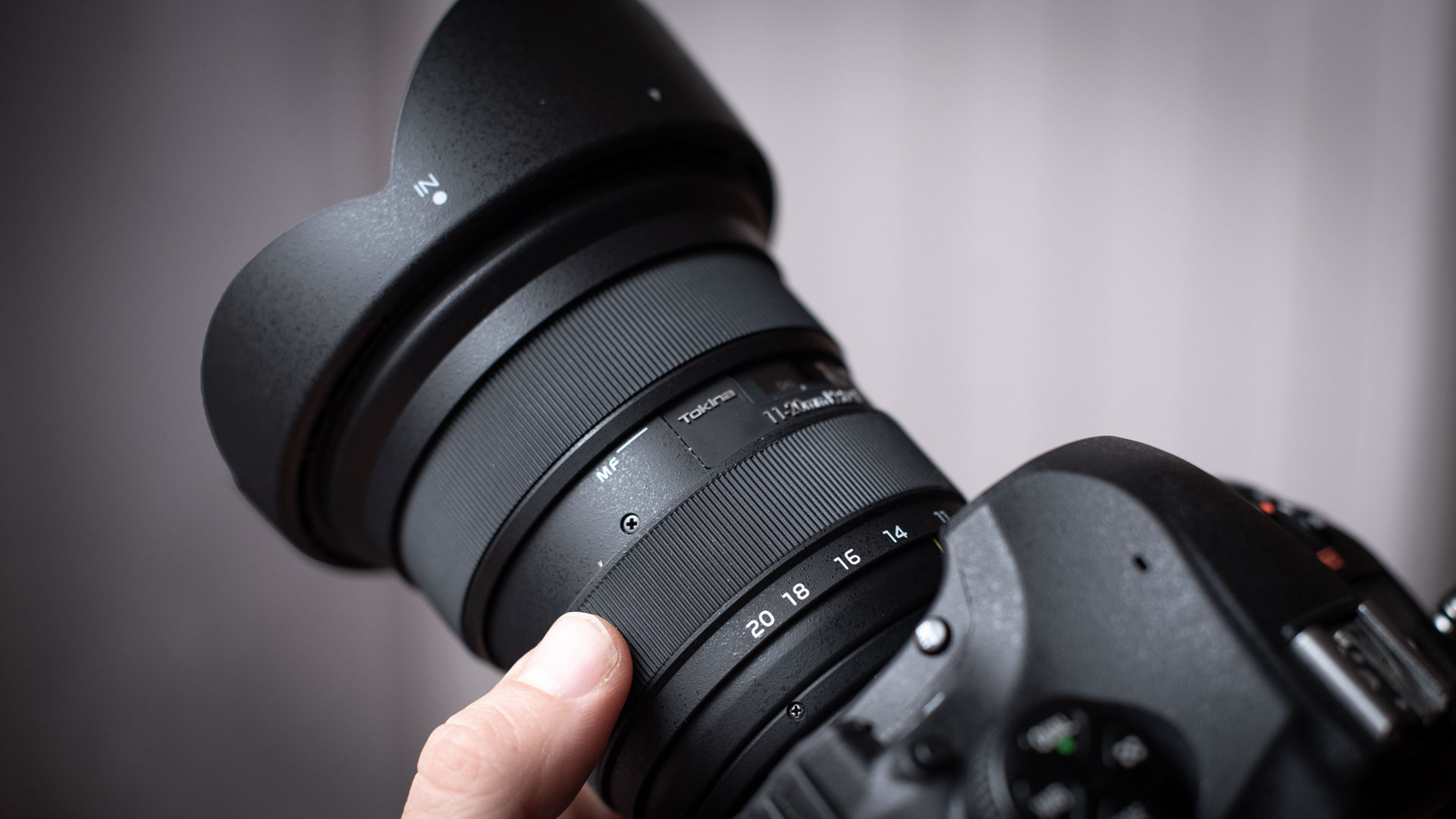

Specifications
Reasons to buy
Reasons to avoid
✅ You want a sturdy lens: This one has a great build quality.
✅ You benefit from constant aperture: This lens has a constant f/2.8 aperture.
✅ You want a lightweight lens: At just 1.23 lbs, this is one of the lighter picks on this list.
❌ You want edge-to-edge sharpness: You'll find chromatic aberration on contrasted edges.
❌ You want a quiet lens: The autofocus on this one is noisy.
🔎 The Tokina atx-i 11-20mm f/2.8 CF is perfect for both wide field astro work and daytime shooting thanks to the precise manual focus and constant f/2.8 aperture. ★★★★½
Design: The Tokina atx-i 11-20mm f/2.8 is available in both Canon EF-mount and Nikon DX F-mount versions, and manages to find a perfect balance between being smooth, sleek and lightweight, while also feeling robust.
Holding this lens with one hand is comfortable, despite its large 82mm filter thread. Switching between manual and automatic focusing is simple: you just pull down the zoom ring, which is a nice change from the tricky switches on other lenses. The focus and zoom rings are close to the barrel, keeping the design sleek, and they have a textured pattern for a secure grip, even when you're wearing gloves in colder weather.
Performance: In our Tokina atx-i 11-20mm f/2.8 review we were very pleased with the image quality on offer here for the price. You're able to get very sharp images throughout the zoom range and there's very little optical distortion, with lines remaining straight even when shooting at 11mm.
We noticed some chromatic aberration, especially around high-contrast areas like stars, and there was noticeable vignetting when shooting wide open at f/2.8. While these problems can be corrected during editing and aren't too severe considering the price of the lens, those wanting better image quality might consider investing in a pricier lens.
Functionality: The manual focus of the Tokina atx-i 11-20 f/2.8 is very precise — and we were pleased to find that the infinity marker on the ring matches almost perfectly with the manual focus to infinity. It's not always the case with other lenses, so it's nice to see. There is autofocus too, of course, but it's a little slower than more expensive lenses — and it can be noisy in motion.
- Read our full Tokina atx-i 11-20mm f/2.8 review
Attributes | Notes |
|---|---|
Design | Sleek, slim and lightweight. |
Performance | Impressive optics, especially for the price. |
Functionality | Constant f/2.8 aperture. |
Best Nikon DSLR lens

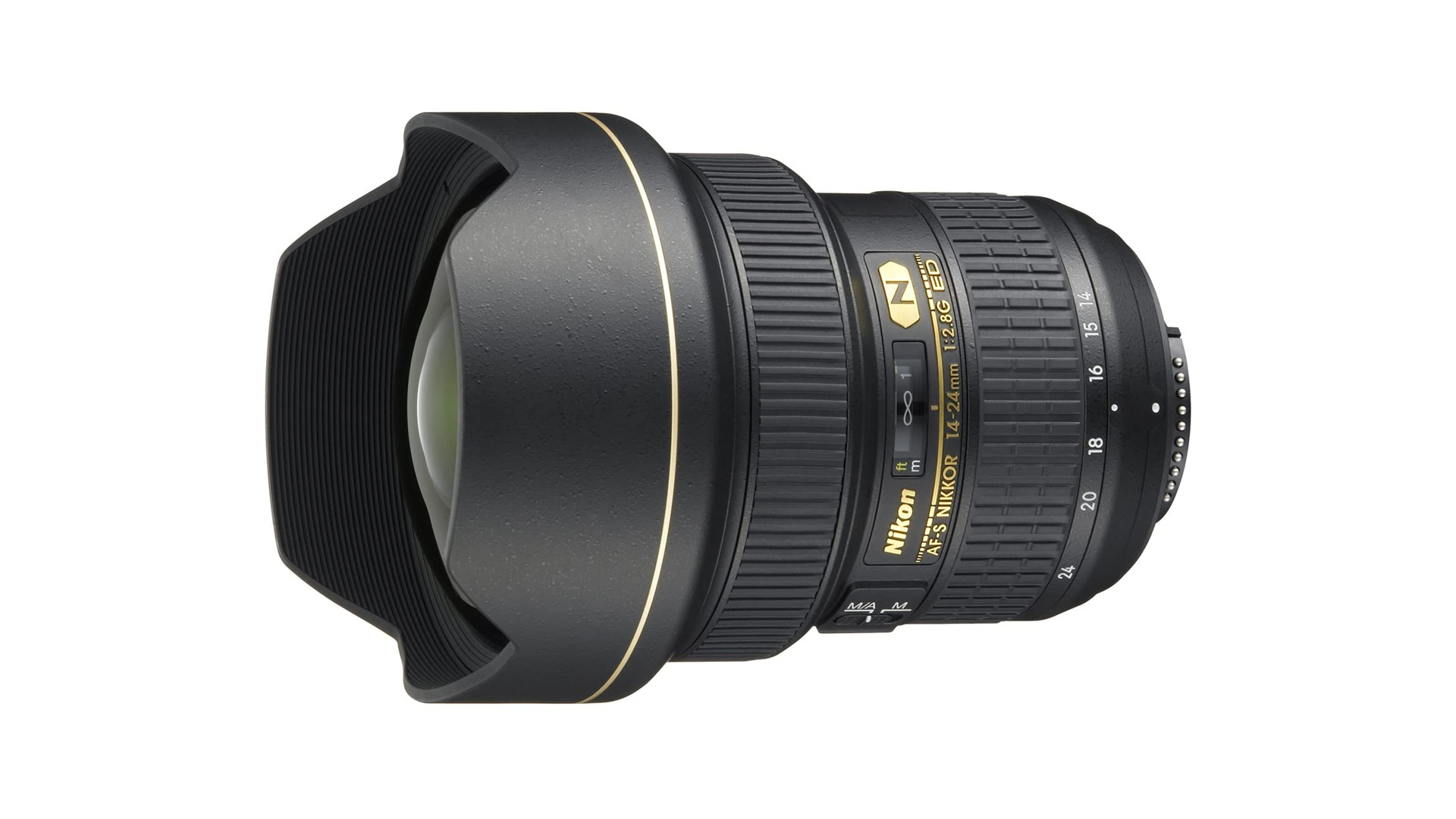

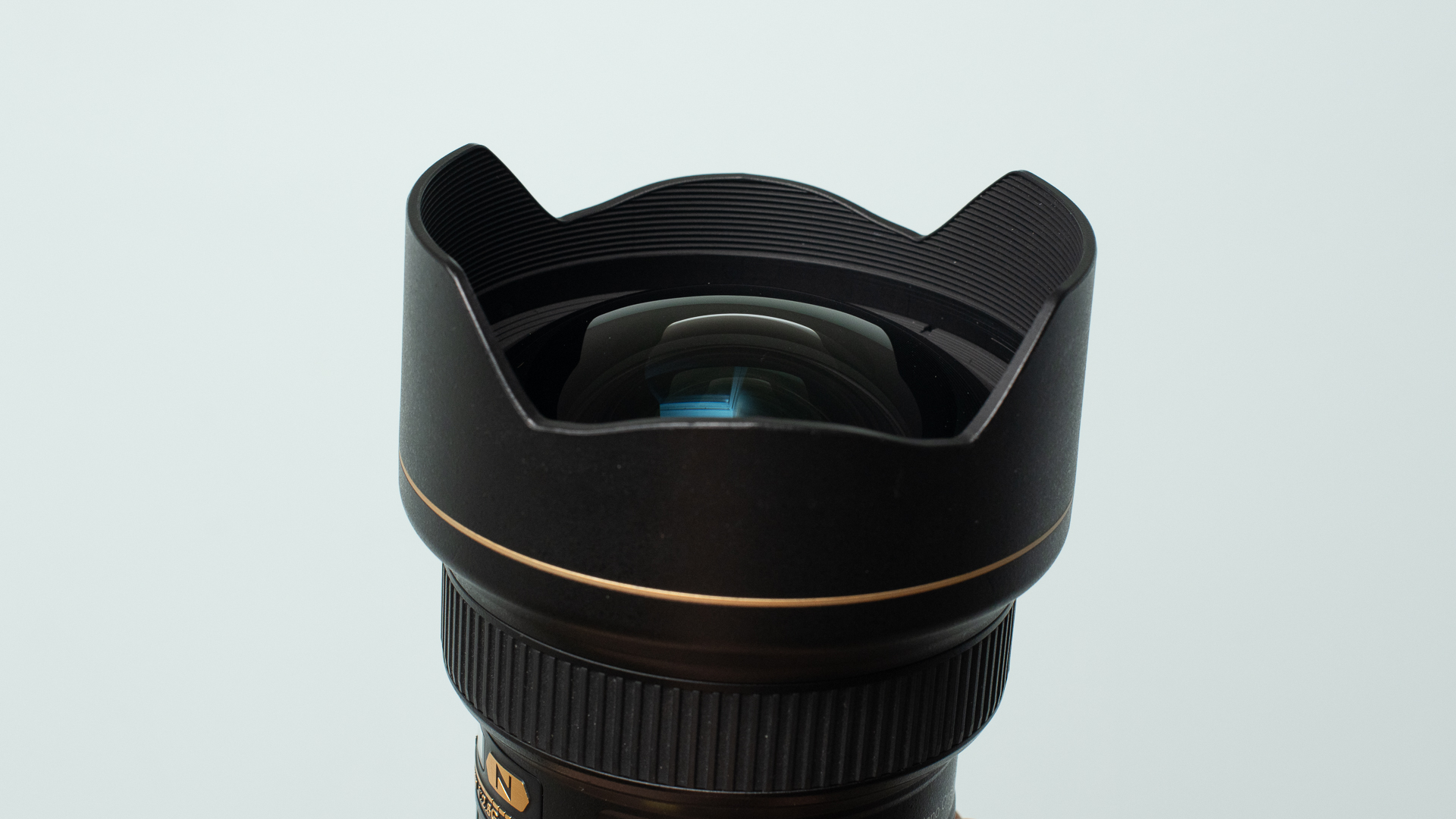
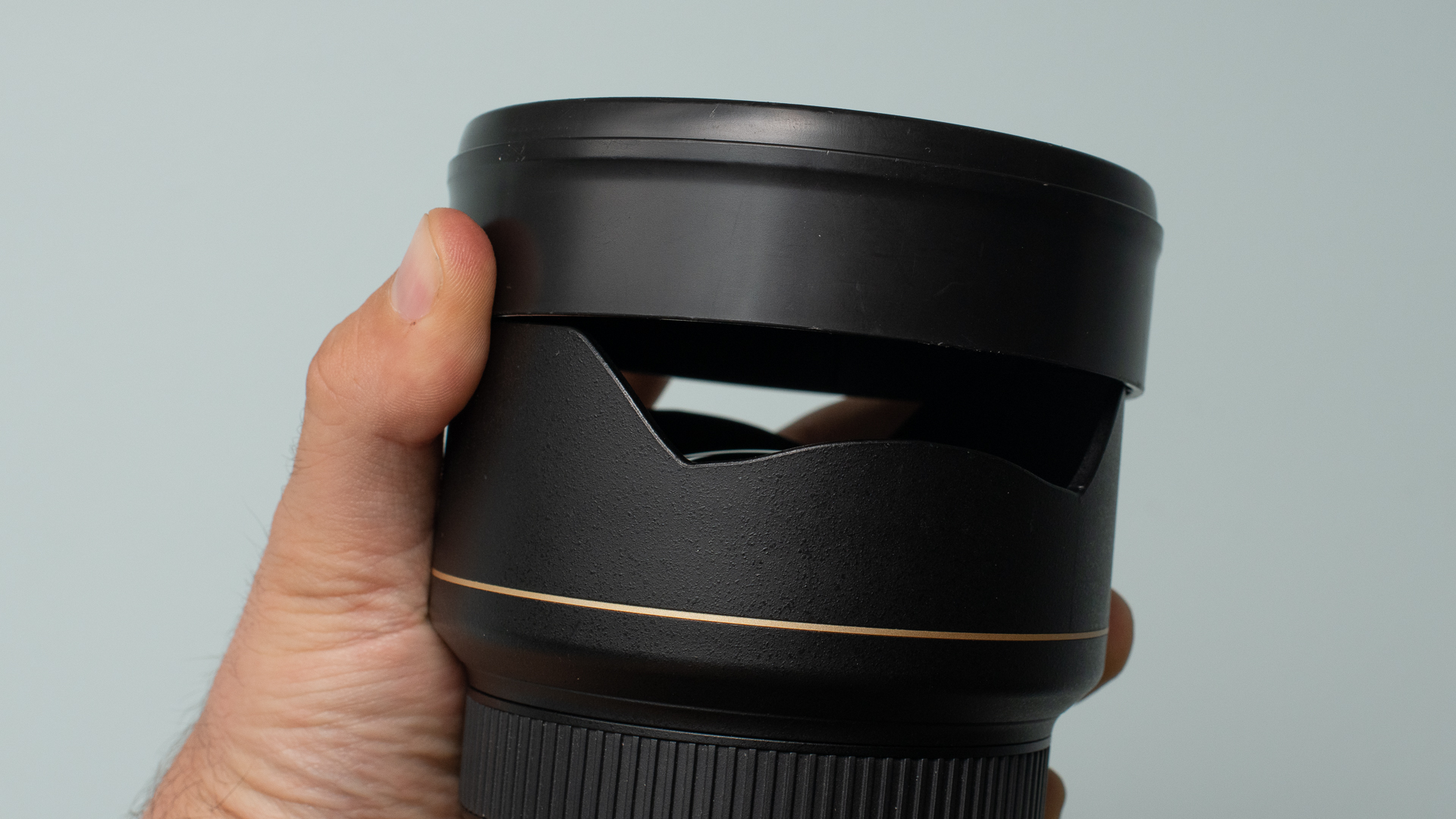
Specifications
Reasons to buy
Reasons to avoid
✅ You want a sturdy lens: This one has a strong build.
✅ You want to shoot the sharpest images: The optical quality on this lens is excellent.
✅ You want a versatile zoom range: With a focal range of 14-24mm, you have plenty of options.
❌ You use filters a lot: They're tricky to add on to the lens.
❌ You want a lightweight lens: This lens is on the heavier side.
❌ You want the latest tech: There are newer alternatives on the market.
🔎 To this day, the Nikon AF-S 14-24mm f/2.8 ED is still a go-to for many professionals and amateurs alike because it provides sharp, clean, straight lines for architectural or interior photography but also works well in low light. ★★★★½
Although it's only compatible with F-mount Nikon bodies, this ultra-wide lens makes a great choice for astrophotography or general shooting thanks to its flexible focal length, fast f/2.8 aperture and razor-sharp results.
Design: The lens has a straightforward design, with a single switch to toggle between manual and automatic focusing modes, and the rubberized grips on the focal length and focus rings make it easy to handle in low light or while wearing gloves. The metal mount adds to its durability, and Nikon has included rubber seals and an integrated lens hood to protect the lens. At 2.2 lbs (998g), it's not the lightest option available, but its build quality is top-notch.
Performance: In our Nikon AF-S 14-24mm f/2.8 ED review, we found that no matter what focal length and aperture we shot at, we got consistently sharp, beautiful results. We barely noticed any chromatic aberration and the sharpness doesn't drop off at all. There's a small amount of vignetting, but that can be easily removed when editing.
The Nikkor AF-S 14-24mm f/2.8 ED is great for using in all lighting conditions, but it works extremely well in low light. Thanks to the focal length flexibility here, it's useful for all kinds of situations alongside astrophotography.
Functionality: This lens offers fast and dependable autofocus thanks to Nikon's Silent Wave Motor technology and Internal Focusing. This design makes the lens quieter because it doesn't rotate while focusing. Additionally, the lens includes a Nano Crystal Coat to scatter light and reduce flaring, resulting in clearer images.
- Read our full Nikon AF-S 14-24mm f/2.8 ED review
Attributes | Notes |
|---|---|
Design | Very robust. |
Performance | Slight barreling, but easily corrected. |
Functionality | Adding filters is tricky. |
Best budget lens
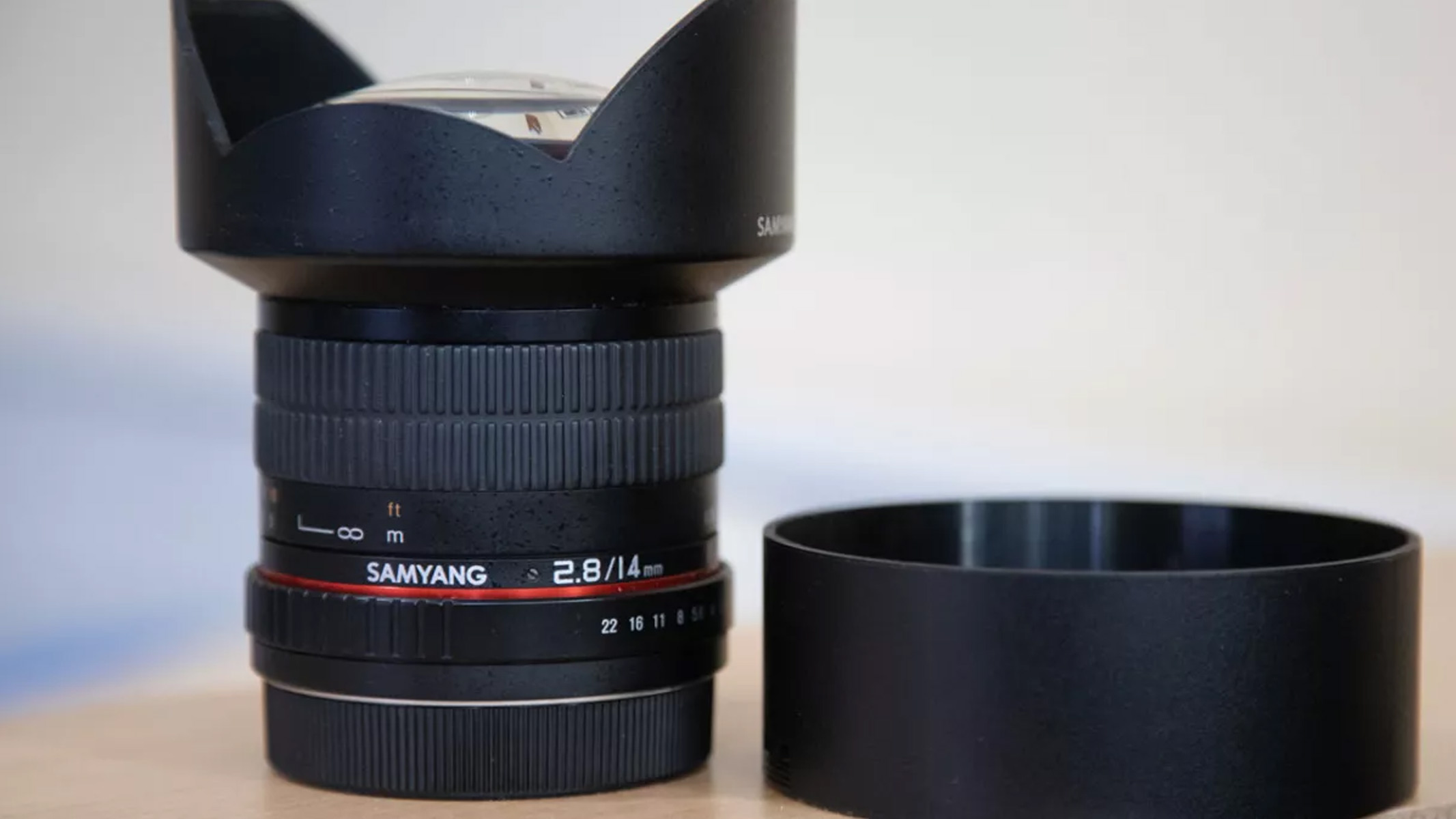
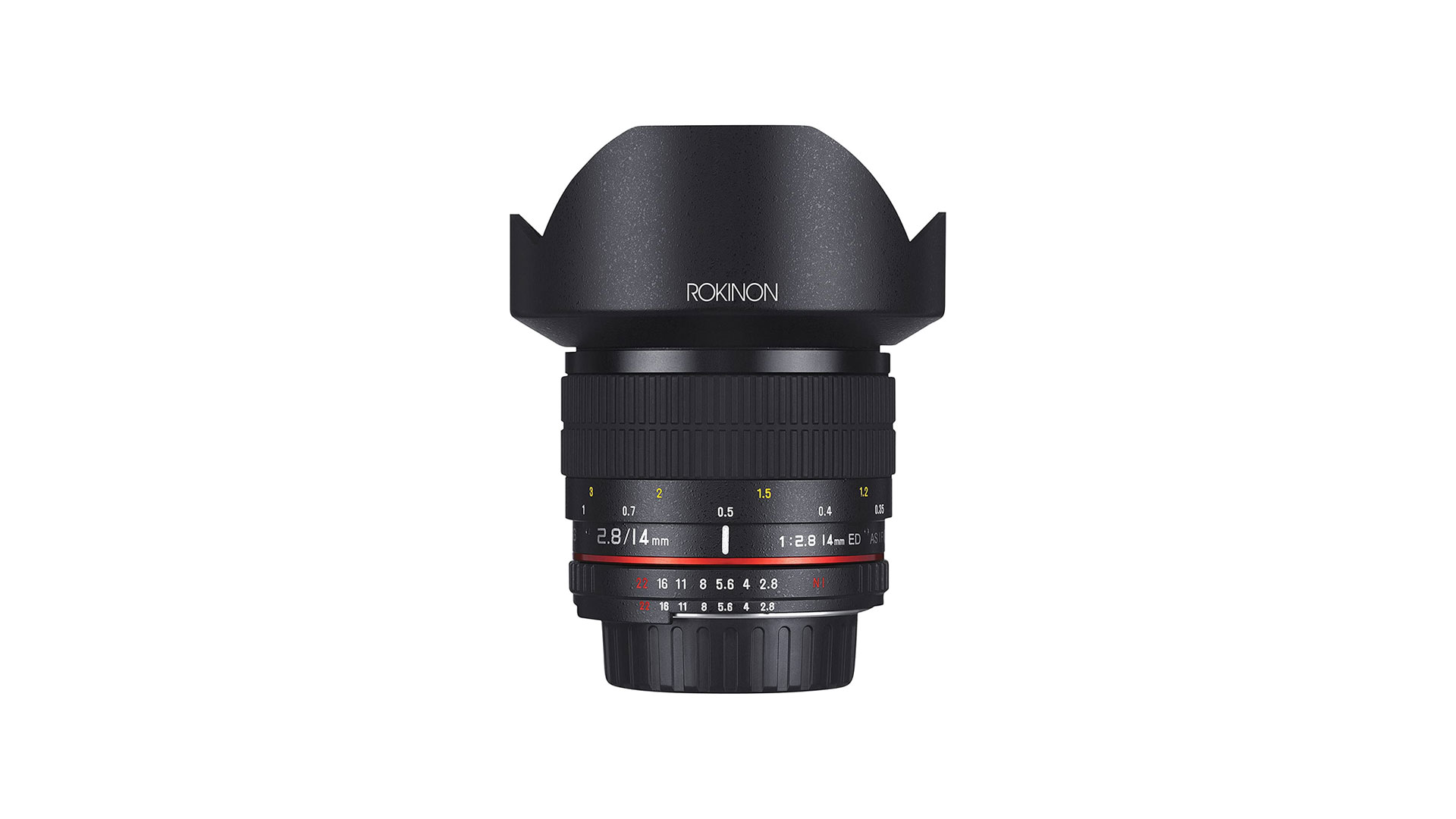
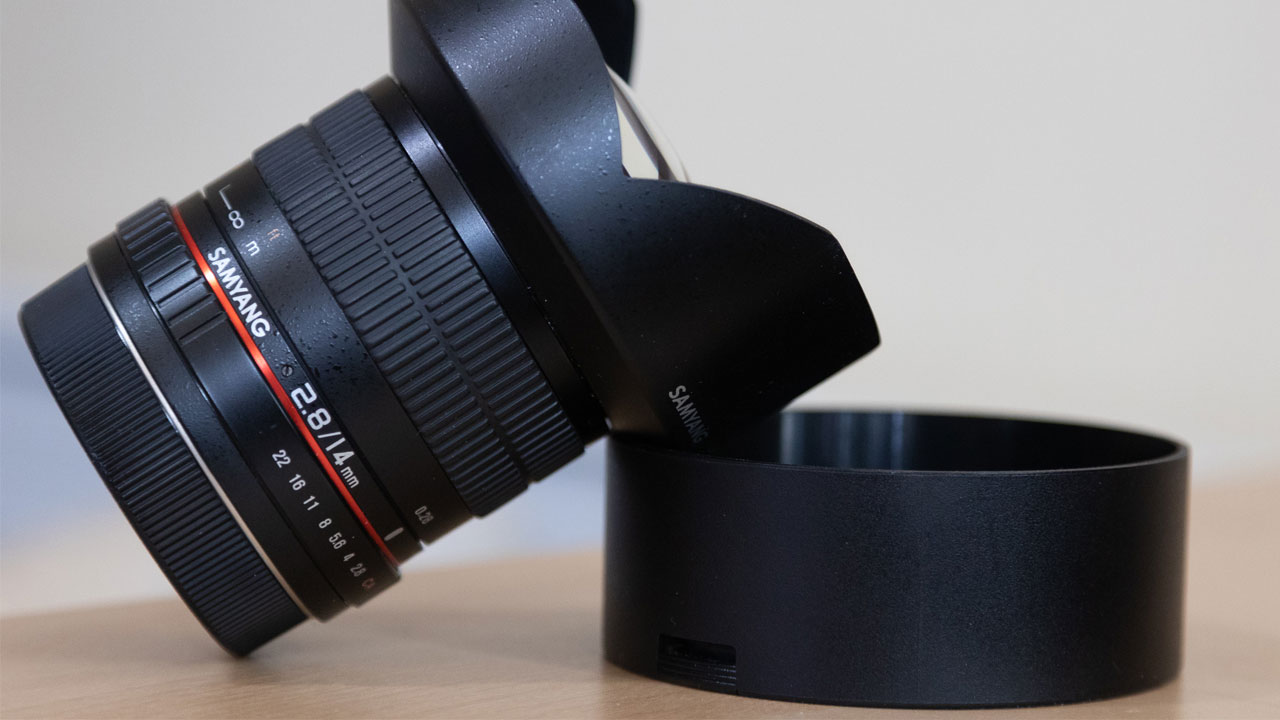
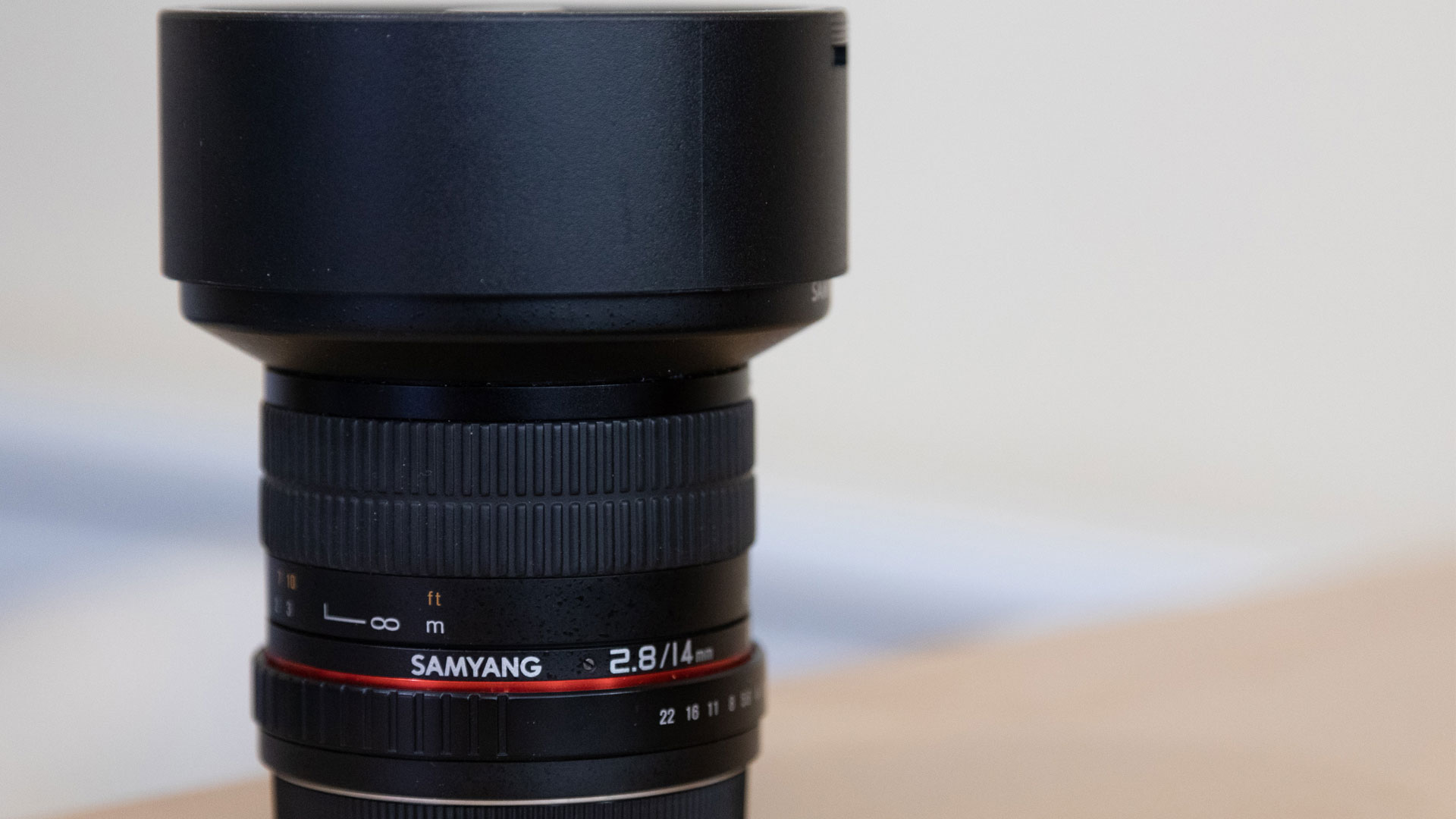
Specifications
Reasons to buy
Reasons to avoid
✅ You're on a budget: Astro lenses aren't cheap, but this one is affordable.
✅ You want edge-to-edge sharpness: Sharpness does deteriorate a bit towards when shooting wide open.
❌ You want no chromatic aberration: There is some distortion when shooting wide open.
❌ You want automated settings: This lens is fully manual.
🔎 If you’re looking for an inexpensive ultrawide lens for astrophotography or landscape/architecture use, then there's very little else on the market to touch the Rokinon/Samyang 14mm f/2.8 lens. ★★★★
Design: Although this South Korean-made lens is one of the cheapest models out there, we gave it four out of five stars in our Rokinon/Samyang 14mm f/2.8 review, so it has well and truly earned its place on our list of the best lenses for astrophotography.
Adjusting the aperture is easy with the manual ring located near the lens base. However, this setup means there's no electronic connection between the lens and the camera, so image data won't be transmitted with your photos. Despite being made of plastic, the lens body is still strong and lightweight.
Astrophotography can be costly, especially since it often demands specialized lenses with wide maximum apertures, which tend to be more expensive due to the size and quality of the glass. Luckily, the Rokinon/Samyang 14mm f/2.8 offers an impressive and wallet-friendly alternative.
The primary reason for the affordability of this lens is that it's entirely manual, meaning you have to manually adjust both the focus and the aperture. While manual focus is typical in astrophotography and doesn't present any problems, it might be less convenient for daytime shooting or capturing moving subjects.
Performance: We've found a slight decrease in sharpness when you're shooting with the Rokinon/Samyang 14mm f/2.8 with the aperture as wide as it can go (f/2.8). As a result, there's a small but noticeable amount of distortion and vignetting, but they're issues that you should be able to fix in post processing with no real problem.
Overall, though, this Rokinon/Samyang lens does a great job of capturing the stars, particularly considering its low price. We think this is a great choice if you're a newcomer to astrophotography and don't necessarily want to spend a huge amount. It'll certainly let you test the waters, and capture some excellent results while doing so.
- Read our full Rokinon/Samyang 14mm f/2.8 review
Attributes | Notes |
|---|---|
Design | Robust and lightweight despite its plastic construction. |
Performance | Some soma, loss of sharpness and distortions — but all can be fixed in post. |
Functionality | Fully manual focus and aperture only. |

Kimberley Lane is a landscape & seascape photographer living in South Wales. Originally using photography as a way to cope with health issues, she aims to portray a feeling of calm and peace through her images. Her work has been featured in a number of national photography magazines and she is a regular contributor to Space.com.
Best lenses for astrophotography: Frequently Asked Questions
What is the best astrophotography lens for Canon?
After careful testing, we've settled on the Canon RF 15-35mm f/2.8L IS USM as the best RF-mount lens for Canon cameras, but if you have an EF-mount camera, the Sigma 14mm f/1.8 DG HSM Art is our top pick.
What is the best astrophotography lens for Sony?
Our extensive product testing revealed that the Sony FE 12-24mm f/2.8 G Master is the best astrophotography lens for Sony camera users. Its ultra-wide angle focal length can go up to a maximum of 12mm, making it perfect to take wide astrophotography shots.
What is the best astrophotography lens for Nikon?
If you have a Nikon mirrorless camera, we'd recommend the Nikon Nikkor Z 14-24mm f/2.8 S as an astrophotography lens thanks to its fast maximum aperture, flexible focal length and brilliant edge-to-edge sharpness. For DSLRs and Nikon F-mount cameras, the Nikkor AF-S 14-24mm f/2.8 ED is our top pick.
What kind of lens do you use for astrophotography?
While this guide gives you options of lens perfectly suited to astrophotography, there's actually no such thing as a lens specifically designed with astrophotography in mind.
That said, if astro is your preferred medium, you'll want a lens with a fast maximum aperture, which will allow as much light onto the camera's image sensor as possible. Another thing to look out for is edge-to-edge sharpness, which ensures your images won't be riddled with chromatic and coma aberrations.
Image stabilization is an added bonus, but not a requirement when shooting astro, as you'll generally be using a tripod which will take care of stabilization. If you're wanting to take images of a wide portion of the night sky, which is usually referred to as wide-field astrophotography, a wide-angle lens is a must. These lenses, of which the Sony FE 12-24mm f/2.8 G Master is a very good example, are versatile and enable you to shoot multiple compositions without having to move your camera.
What size lens is best for astrophotography?
Generally speaking, the better the optics are on a lens, the heavier it will be. In astrophotography, you'll usually be using a tripod, which means as long as your tripod's payload can take it, you can afford to opt for a bigger and heavier lens while it is on the camera. That said, if you're hoping to take your lens on the road a lot, you'll want to be mindful of its weight.
Focal length is another important factor when choosing a lens for astrophotography. A length anywhere from 24mm on is recommended for night sky photography, and telephoto zoom lenses such as the Nikon Nikkor Z 70-200mm f/2.8 S-Line are best suited for deep-field photography and close-ups of celestial objects. A focal length of 50mm might just about do if your camera has an aperture of f/2.8 and wider, but we wouldn't recommend it if you're hoping to include a decent portion of the night sky into your shots.
What is the 500 rule in astrophotography?
The 500 rule is a rough calculation that allows you to determine the exposure length for a specific lens before you'll find star trails beginning to appear. To do that, you'll need to divide 500 by your lens' focal length in millimeters. For example, 500 / 24mm = 20.83 seconds of exposure before noticeable star trails start to appear.
*Star trails are the blurring of the stars during a long exposure, which is brought on by the earth's rotation.
Should I buy a prime or zoom lens for astrophotography?
Zoom vs prime lenses: Which is best?
This will depend on personal preference, as well as a few other factors. When you're making your choice, you'll want to keep versatility, budget and which camera system you use in mind.
Prime lenses tend to yield less distortion, and they perform better in low-light environments. Zoom lenses, however, are more versatile and offer a range of focal lengths, which means they'll be better suited for photographers with a range of interests. It's worth noting though that zoom lenses tend to have a smaller maximum aperture, which means they let less light through to the camera sensor.
So if you're looking to invest in one lens for all your photography, a wide-angle zoom lens may be the perfect option, as it comes with a range of focal lengths. But if you're serious about shooting astrophotography, it's in your best interest to prioritize finding a lens that has an ultra-fast f/1.8 maximum aperture, even if that means having a fixed focal length.
If you're a budding astrophotographer and still learning the craft, we recommend going for the Rokinon 14mm f/2.8 lens. It provides great optics and importantly, great value for money if you're not yet sure how committed you are to the field.
How much do astrophotography lenses cost?
Astrophotography lenses can set you back quite a bit of money, but you will find some costing anywhere between $250 and $2,800. The price tag depends on quality, of course, but also on the make and model of your camera.
It's worth remembering most lenses for astrophotography, including the ones we recommend in this guide, are actually suited for more than one style of photography. With them, you'll be able to venture into landscape, travel, sports and even lifestyle photography, so they're an investment for your practice as a whole.
The budget you have on hand is an important consideration when you're choosing a lens; we've included options at a range of prices with different features and functionalities. Whether you're a pro looking for your next Sony or Nikon lens, or just starting out in astrophotography and after your first ever lens, we've got options at different price points that all guarantee quality results.
What aperture value should my lens have for astro?
Aperture is particularly important to consider when choosing an astrophotography lens. You'll want to look at lenses with fast maximum apertures (f/2.8 or wider, which means looking at lower numbers such as f/2, f/1.8, f/1.4, etc).
The wider the aperture, the more light the lens will let in to your camera's image sensor, which is vital to capture great shots of the night sky. A wider aperture also means you can shoot with shorter shutter speeds as this reduces blur from camera shake, which in turn prevents star trails from appearing on your shots. You'll also be able to shoot with a lower ISO sensitivity, which should considerably reduce image noise.
Do I need any other camera gear to take astrophotographs?
Taking breath-taking astrophotography shots does require a little bit of a kit. For instance, having one of the best cameras for astrophotography is recommended (but not essential) to get the best results. What's more important is having one the best tripods or best travel tripods to keep your whole setup steady and avoid blurry images.
There are a variety of other accessories you can choose to invest in to obtain better results. Lens heaters, for example, can prevent your lens from fogging when shooting in colder outdoor settings, and intervalometers allow you to trigger your camera remotely, reducing blur from your camera shaking.
Update log
Editor's Note 11/21/25: Updated introduction to include up-to-date Black Friday information and linking out to our night sky guide for astrophotography recommendations.
How we tested the best lenses for astrophotography
At Space.com, we understand that it can be difficult to find the right camera lens for your needs. That's why we put every lens through a rigorous review process to ensure that we provide you with honest and up-to-date recommendations. Our expert staff and knowledgeable freelance contributors test each lens based on a variety of factors including its construction, design, optical performance, and usability.
Each lens is evaluated based on its price point, class, and intended use so that we can provide you with the most relevant and accurate information. We take into account the latest imaging technology, as well as the lens's weight and portability, to help you make an informed decision.
If necessary, we'll also suggest other equipment that might enhance your viewing experience, such as lens hoods or filters. At Space.com, we are committed to providing reliable and transparent buying advice. Our reviews and buying guides are completely editorially independent, ensuring that you can trust us to provide you with the best possible information, whether you decide to make a purchase or not.
Breaking space news, the latest updates on rocket launches, skywatching events and more!

Jase Parnell-Brookes is the Managing Editor for e-commerce for Space and Live Science. Previously the Channel Editor for Cameras and Skywatching at Space, Jase has been an editor and contributing expert across a wide range of publications since 2010. Based in the UK, they are also an award-winning photographer and educator winning the Gold Prize award in the Nikon Photo Contest 2018/19 and named Digital Photographer of the Year in 2014. After completing their Masters degree in 2011 and qualifying as a teacher in 2012, Jase has spent the last two decades studying and working in photography and publishing in multiple areas, and specializes in low light optics and camera systems.
- Mina FrostContributing writer
- Chris McMullenContributing Writer
- Kimberley LaneContributing writer
- Harry BennettE-commerce Staff Writer
